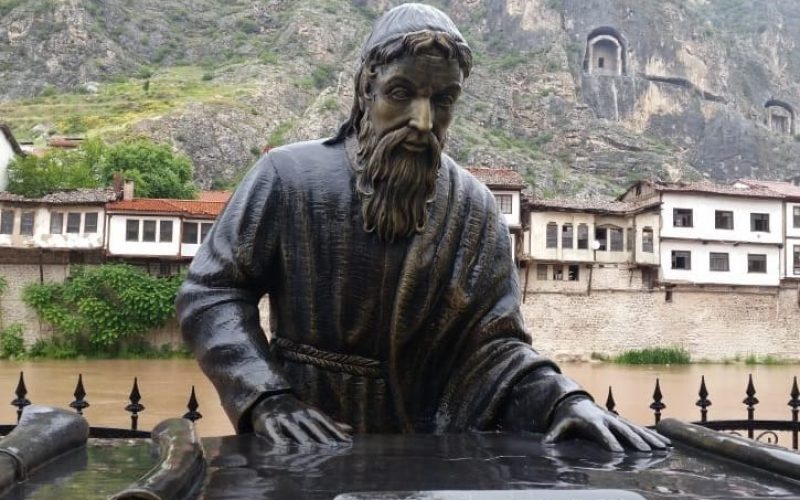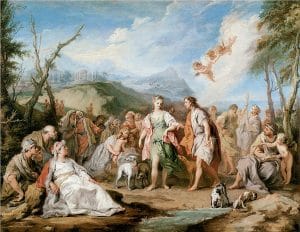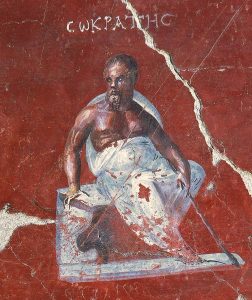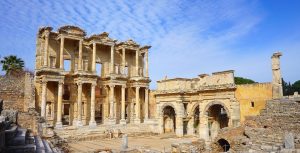Strabo is the author of Geographika, which is considered the basis for world geography. He is an author who is accepted as the knowledge reference of the ancient world. In this article, we will examine 3 main items that Starbo wrote for Ephesus. In his writings – the sections where Ephesus is mentioned – the sections about Artemis of Ephesus and – the information about the Ephesians.
Strabo was born in the city of Amasya in Turkey as the child of a wealthy Roman family who was born in 64 BC and lived for 24 years BC and died in Amasya. He studied at Nysa (near Sultanhisar) near Tralles (Aydın) in Caria (from the coast, southern parts of the Büyük Menderes Valley). His family may have moved with him to Nysa during Roman rule because King Pompey was hostile to this family because of their Locullus affiliation.
He is the world’s first geographer to be accepted. He received classical Greek education and took rhetoric lessons from Aristodemus. Although he initially defended Aristotelian views, he later became influenced by Athenodoros, one of Augustus’ teachers, and adopted the views of the Stoic school. B.C. He remained in Rome until 31. He is known for traveling a lot during his lifetime. In addition, he produced a unique and very important work by telling which nations settled where.
At maturity, he wrote a work called Historika Hypomnemata (Historical Memoirs). This work, in 43 volumes, is a continuation of the history of Polybios.
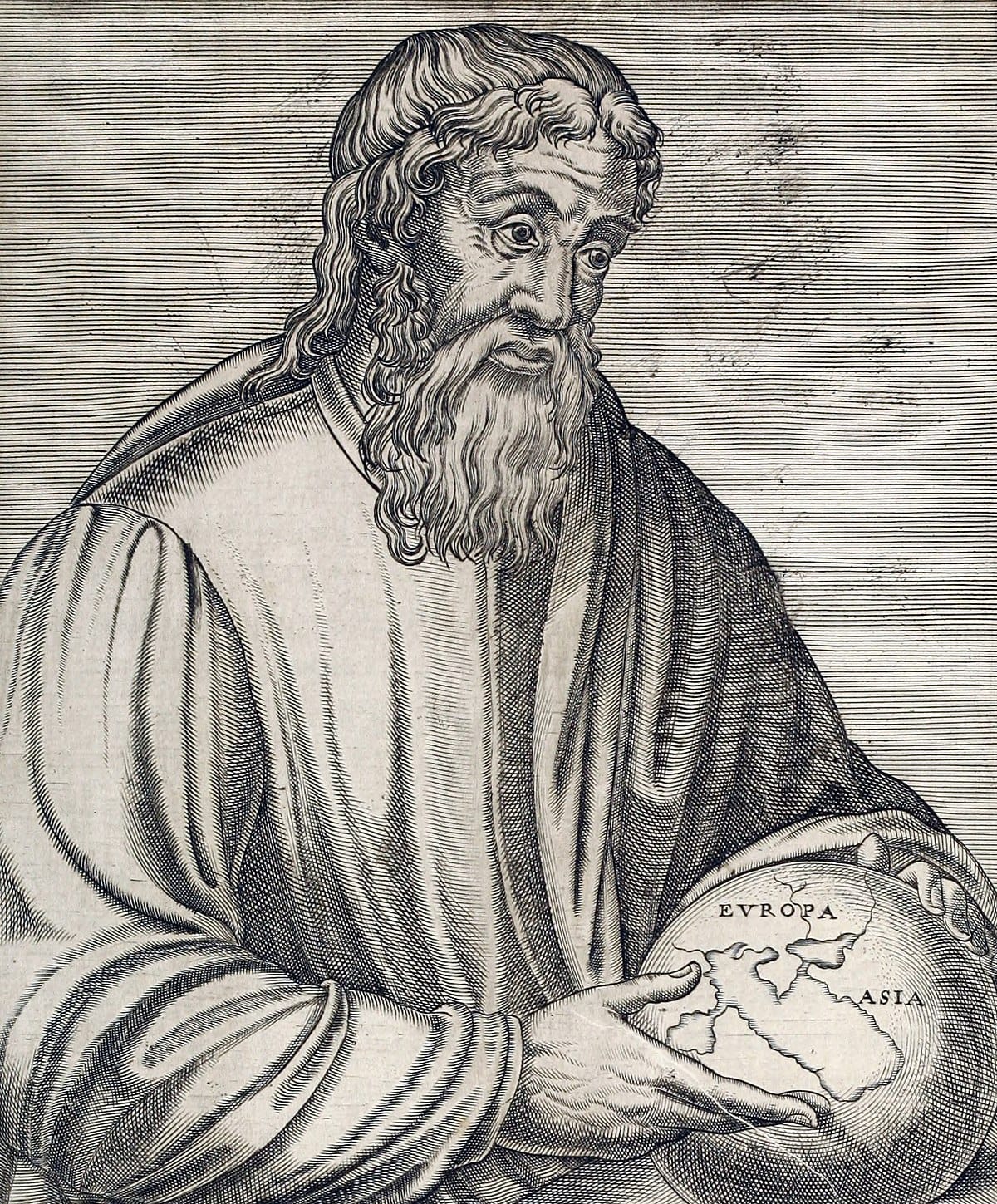
It covers the period from the fall of Corinth and Carthage (146 BC) to the death of Caesar or the Battle of Actium. Only 19 pieces have survived to the present day. Most of his 17-volume Geographumena or Geographika (Geography) has survived to the present day. The author wrote this work for the cultured people of the Greek and Roman world.
The work that includes the widest eclectic thoughts; He was inspired by historians Eratosthenes, Hipparchus, Epheros, Polybios, and Poseidonios. Although Strabo’s geography has a historical feature, it also indicates the relations of people, tribes and empires with the physical world. Strabo is also a geoscientist who made the first cause/effect relationship explanation of volcanism in ancient times.
Strabo's information about Ephesus and Ephesus trip notes
Chapters on Ephesus
Strabo XII / 3 – 21 Some read the names as “With Alazon”, others as “Amazons” and the word “From Alybe” as “From Alope” or “From Alobe” and “Alazons” to the Skyts beyond the river Borysthenes. ” and also by giving “Kallipids” and other names, which were forced upon us by Hellanicus and Herodotus and Eudoksos, and by placing the Amazons between Mysia, Caria and Lydia near Cyme, which is the idea of Ephoros of Kyme, they changed the text.
This view of Ephoros may not be unreasonable, for they may have meant the country that was formerly inhabited by the Amazons, and later by the Aeolians and Ionians, and there are certain cities named after the Amazons, he said. Like Ephesus, Symrna, Kyme and Myrina. But how can Alybe, or “Alope or Alobe” as some say, be found in this region? How can the words “far away” and “where silver comes from” be explained?
Strabo XII / 3 – 22 – Epheros resolves these obstacles by changing the text, for he wrote: “But the Amazons were taken by Odios and Epistrophos far far from the Alope, where the Amazon race is located.” But as he resolves the difficulties, he stumbles upon another wrong idea; because in that area the Alope is nowhere to be found and furthermore it is possible that the manuscripts will be replaced by innovations that spoil the testimony.
Obviously neither the idea of Ephoros from Skepsis, nor the opinion of those who assumed that these were the Halizons next to Pallene, which I have mentioned in the history of Macedonia.
He is also incapable of realizing that a combined force of nomads from beyond the river Borysthenes could have been conceived to help the Trojans, and he was particularly intrigued by Hekataios of Miletus, Menecrates of Elaia, disciple of Xenocrates, and also of Palaiphatos. confirms his ideas.
The first of these states in his book “The Circle of the World”: “Near the city of Alazia lies the Odrysses river, coming out of the Daskylitis lake in the west, passing through the Mygdonia plain and pouring into Rhyndakos.”
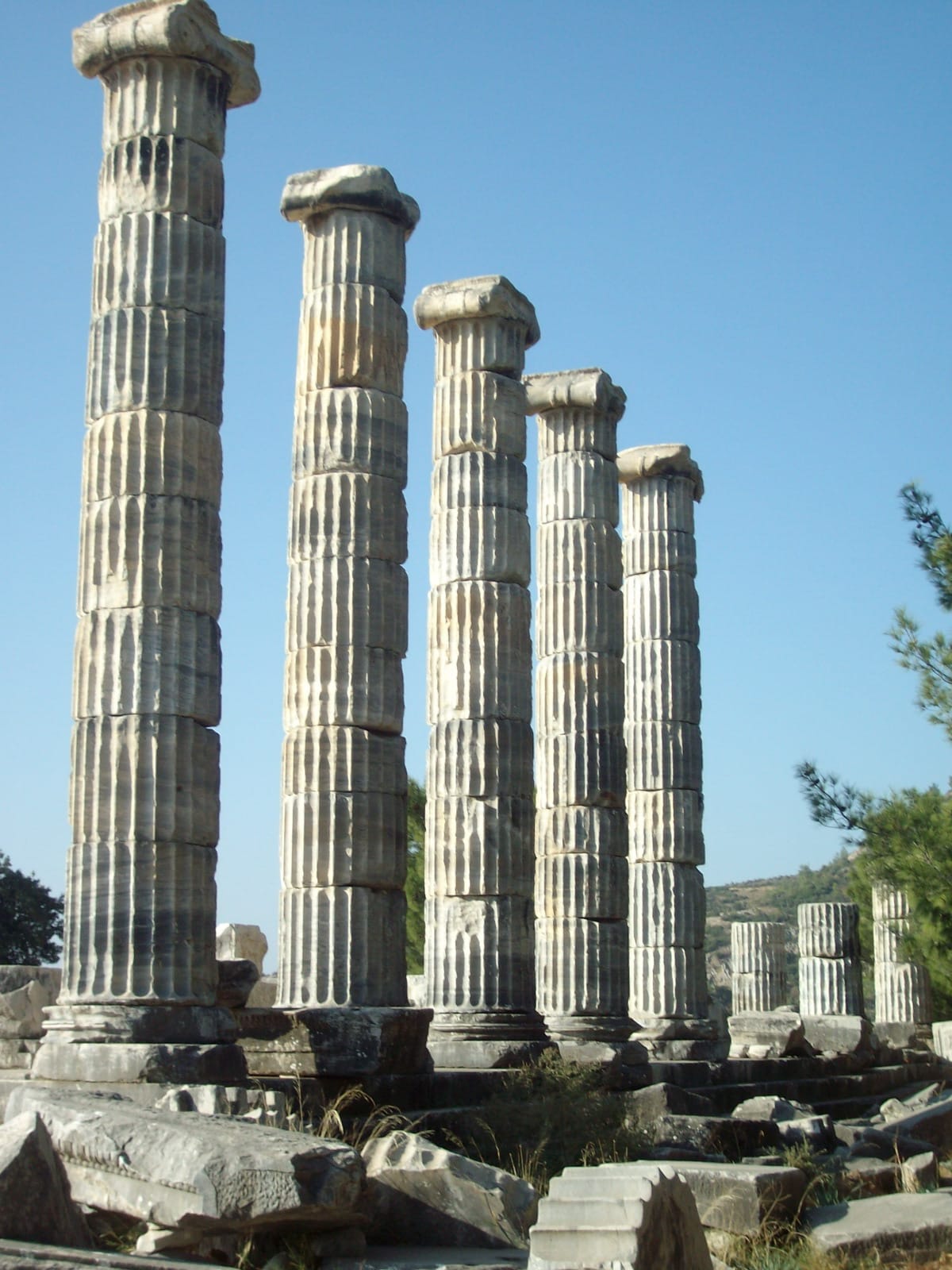
But he goes further and says that Alazia is now deserted and that many villages in the Alazons, through which the Odrysses river flows, were inhabited, and a special honor was given to Apollo, especially in the villages on the border of Kyzikene.
Menecrates, in his work “The Circle of Hellespontus”, says that there is a neighboring region occupied by the tribe of the Halizons on the upper side of the Myrleia region and that its name should be written with a double (II), but the poet writes it with an (I) because of the scale.
Palaiphatos says that Odios and Epistrophos, with an army of Amazons living then in Alope but now in Zeleia, made a campaign. How, then, can their ideas be accepted?
These authors both altered the old text and showed us neither the silver mines nor the location of Alope in Myrleia, nor how they got from there to Troy, even if it is assumed that there really was an Alope or Alazia. Because, naturally, these are closer to Troas than the places around Ephesus.
However, Demetrios says that those who claim to live in the vicinity of Pygela between Ephesus and Magnesia and Priene are saying nonsense, because the expression “too far” would not be appropriate for this region. So this idiom is more appropriate for the regions of Mysia and Teuthrania.
Strabo XII / 8 – Apameia is the largest commercial center of Asia, here I use Asia in a special sense (Asia Minor) and this city is second only to Ephesus. Apameia is the warehouse of trade goods from both Italy and Hellas. Apameia was founded next to the sources of the Marsyas river. The river flows through the middle of the city and its sources are inside the city.
After wandering down around the city, it joins Menderes with a violent and hasty current. After Meander joins another river called Orgas, it passes through a flat country with a soft and heavy current, and after it expands further and flows through Phrygia for a while, it forms the border between Caria and Lydia in a place called the Meander plain.
The current here is so curved that anything that is so curved is called meandering. The river finally flows through Caria, now formed by the Ionians, and empties into the sea between Miletos and Priene. It comes out of the hill called Kelainai, on which there is a city of the same name.
Antiochus Soter settled the inhabitants of Kelainai from today’s Apameai, and this city took its name from Apama, the mother of the king. Apama was the daughter of Artabazos and married Seleukos Nikator. The legend of Olympos and Marsyas and the competition between Marsyas and Apollo took place here. Above Kelainai is the reed-growing lake suitable for the construction of the flutes mouth. The springs of both Marsyas and Menderes are fed from this lake.
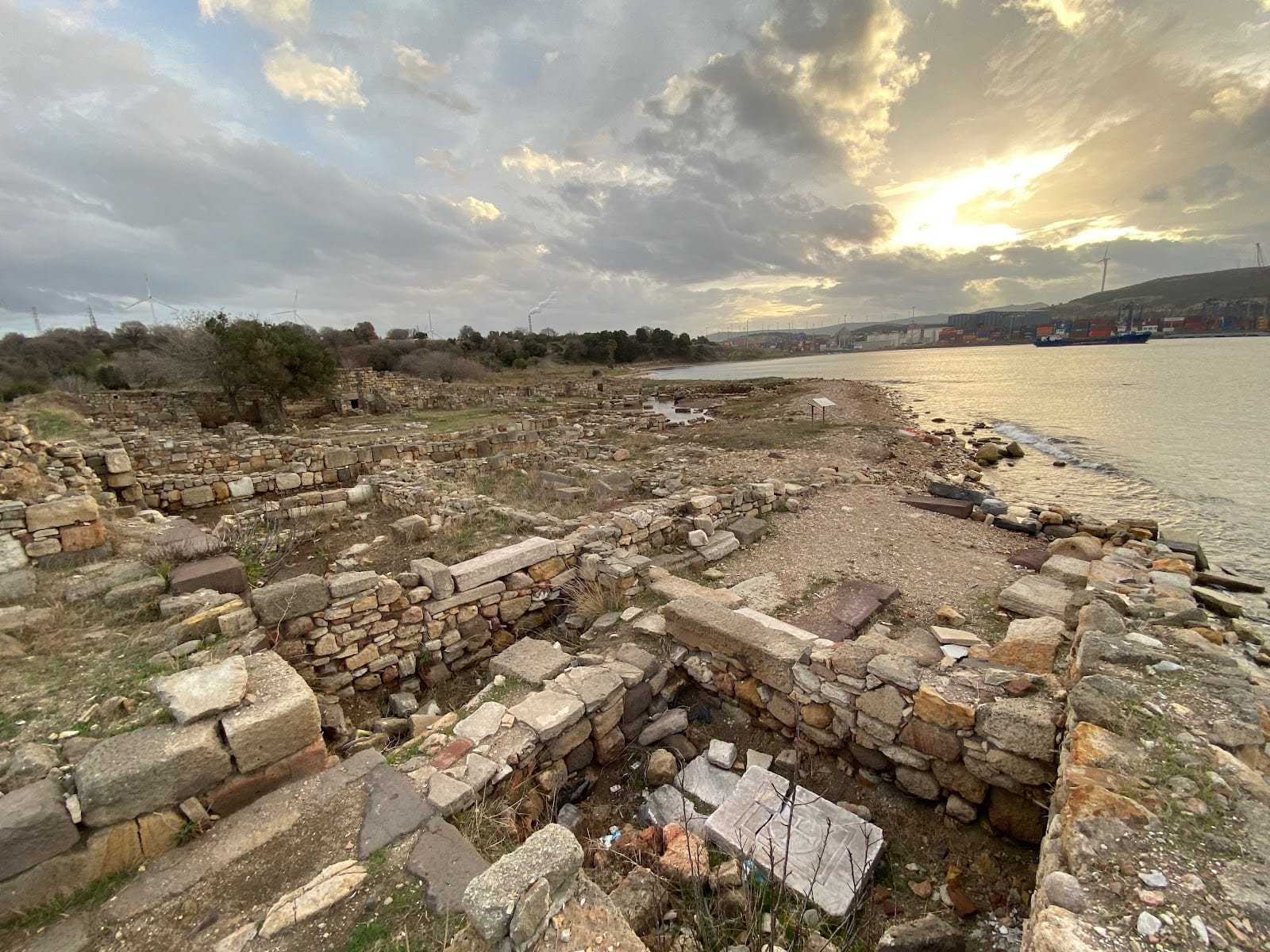
Strabo XIII / 3 – 2 – In order to deduce from the poet’s statement the exact boundaries of the places where the Cilicians, Pelasg and (Ketei) tribe spread, it is necessary to consider many possibilities.
Of these rights, the Cilicians and Ketei were under the command of Eurypylos, and the Pelasg were in between the two.
Everything that can be said about the peoples and Cilicians under the command of Eurypylos has been said so far, and it is known that the Kaikos river forms the borders of the country in general.
As for the Pelasgians: both from the words of Homer and from history in general, it is more plausible to show them after these peoples. Because Homer says: “There are Hippothoos and Pylaios.
He was the son of Lethos, the son of Teutamos, both descended from Pelasg. (Iliad epic) ” With these words, he indicates that the number of Pelasg is high, because he says “tribes”, not tribe, and clearly states Larisa as a settlement.
There are many Larisas in our time. But we must interpret it as Homer states in the Iliad, and it would be appropriate to consider the one near Cyme as the most appropriate. Because of the three Larissa, the one near Hamaksitus is very close to Ilion. It is two hundred stadiums away.
Therefore, it cannot be said with certainty where Hippothoos fought Patrochus, because the poet speaks of Laris as “far away”. It is more likely that it was Larisa near Cyme. Because the distance between these two places is 1000 stadions.
Third Larisa is a village located on the plain of Ephesus on the plain of Kaistros. It is said that this place was a city recently and that there was a temple belonging to Larisa Apollo.
Larisa is closer to Mount Tmolos than Ephesus. Laris is 108 stadions away from Ephesus, and they may have settled below the Maionians. But the Ephesians, who got stronger over time, have now captured the lands of the Maionians, which we call the Lydians.
Therefore, this cannot be the Larisa of the Pelags. It’s more likely to be near Cyme. In fact, there is no strong evidence that Larisa in the plain of Kaistros existed at that time. Likewise, there is no Ephesus. But Ailoia, which emerged just after the Trojan wars, bears witness to the presence of Larisa near the historical Cyme.
Strabo XIV – I. / 2 – The Ionian excursion along the coast is approximately 3430 stadiums. The fact that this distance is so great is due to the abundance of the gulfs and the extreme size of the peninsula. However, this distance is not much in a straight line along the isthmus. For example, a straight line trip from Ephesus to Smyrna is only 321 stadiums.
The distance to Metropolis is 120 stadions, the rest is the distance to Smyrna. However, coastal travel is less than 2200 stadiums. The borders of the Ionian coasts can be drawn as follows; These shores reach Phokaia from Poseidon of Miletos and the borders of Caria to the Hermos river, which later became the border of the Ionian coastline.
Strabo XIV – I. / 4 – These are the 12 ion cities. But later on, Smyrna was persuaded by Ephesus to join the Ionian union and joined. In the past, when Ephesus was also called Smyrna, Ephesus was neighbors with Smyrna. Kallinos is somewhere. He calls it Smyrna instead of Ephesus. As in his prayer to Zeus: “Have mercy on the Smyrnaeans! Don’t forget that the Smyrnas always make an offering by burning beautiful ox thighs for you!”
Smyrna was an amazon that took Ephesus, and since then both the city and its inhabitants have been named after him, just as some Ephesians were named Sisyrbites after Sisyrbe. “He lived in Smyrna, at the back of the city, between Tracheia and Lepra Akte,” Hipponax writes. As can be understood from its clear definition in the form, a region of Ephesus was named Smyrna.
Lepra Akte is the name given to the Prion hill, which lies in the upper part of the present city and contains some of the city’s borders. The back of the Prion hill belongs to the lands of the Opistholeprians, and the lands along the hills around Koressos are called “Tracheia”. The city used to be around Athenion.
This place is now outside the city, next to Hypelaios, from which it takes its name. Thus, Smyrna was behind the present city, between Tracheia and Lepra Akte, next to today’s gymnasion.
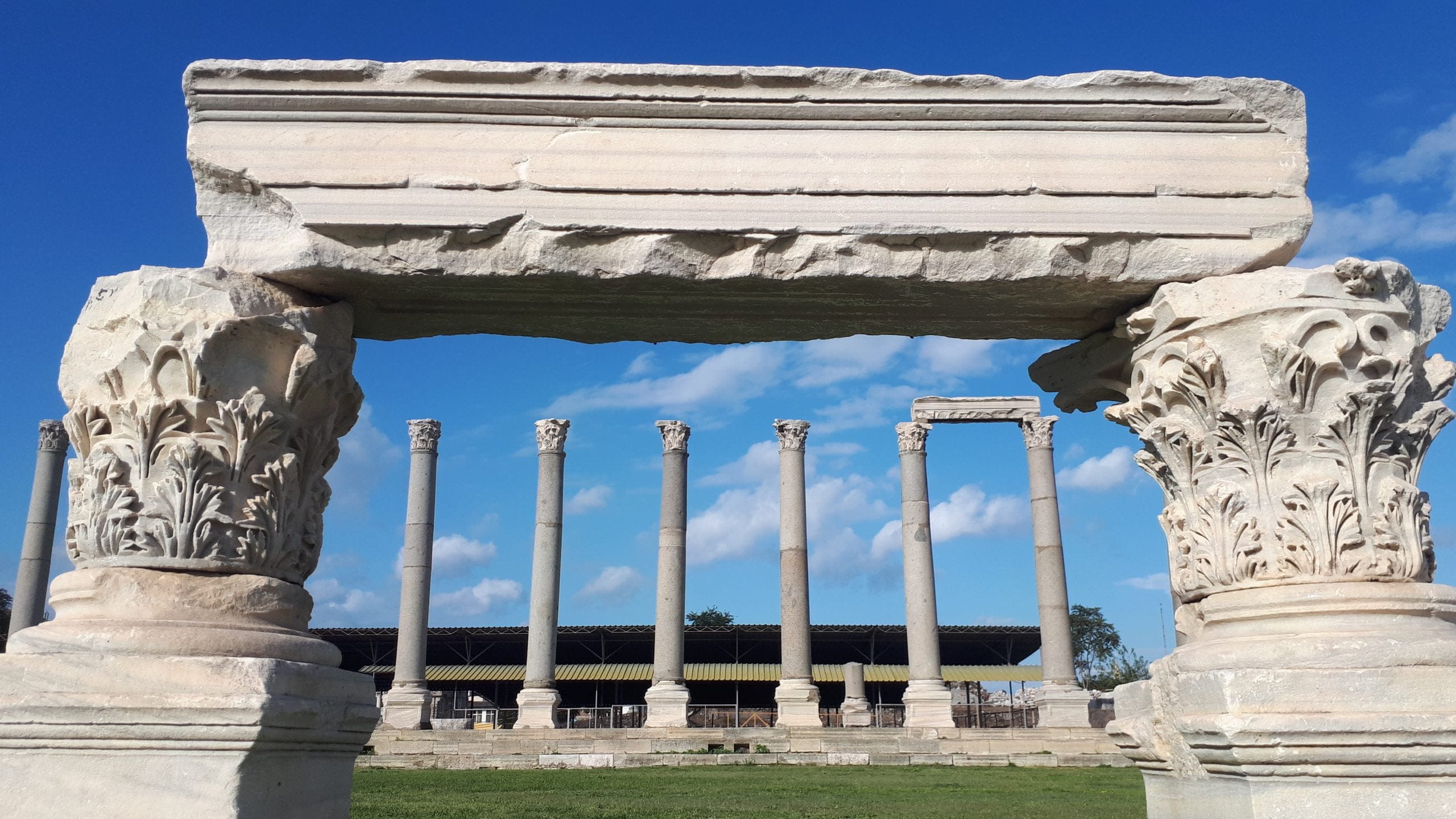
The people of Smyrna, who wanted to leave Ephesus, came to the place where Smyrna was now established. This was the land of the Leleges. They drove the Leleges from their land and founded ancient Smyrna, which is about 120 stadia away from today’s Smyrna.
But the Smyrnaeans, who were later expelled by the Aeolians, took refuge in Colophon and then returned to their country with the Colophonians and took it back. Reminding that Smyrna has always been a subject of contention, Mimnermos says in his Nanno: “After leaving Pylos, the steep city of Neleus, he came by ship to beautiful Asia, and with our victory, we took up the venture with an established and devastating audacity to our beloved Colophon.
From here we crossed the Asteeis River and, by the will of the gods, captured Smyrna of the Aiolis.” As a result, I’ve talked a lot about this. But I will repeat many parts in detail, starting with the main places where the first establishments occurred, I mean those around Miletus and Ephesus. Because these are the best and most famous cities.
Strabo XIV – I. / 5 – Right after the Poseidon of the Miletos, there is the oracle of Apollon of Didyma in the country of Brankhids, 18 stadions inside from the coast.
Except for the one in Ephesus, this place, along with other temples, was set on fire by Xerxes.
The Brankhids handed over the treasures of the temple to the Persian king Xerxes, and sided with him to escape punishment for his robbery and treachery.
Although the people of Miletos built the largest temple in the world here, the roof of this temple could not be covered due to its width.
The area around the sanctuary surrounding the temple is enough to inhabit a town.
There is a beautiful and sacred grove inside and outside of this area, and other sacred places in this area also contain divination hearths and cult objects.
The love legend of Apollo and Brankhos took place here. The temple is adorned with the most expensive votive items of ancient art.
From there, the journey to the city by land and sea does not take long.
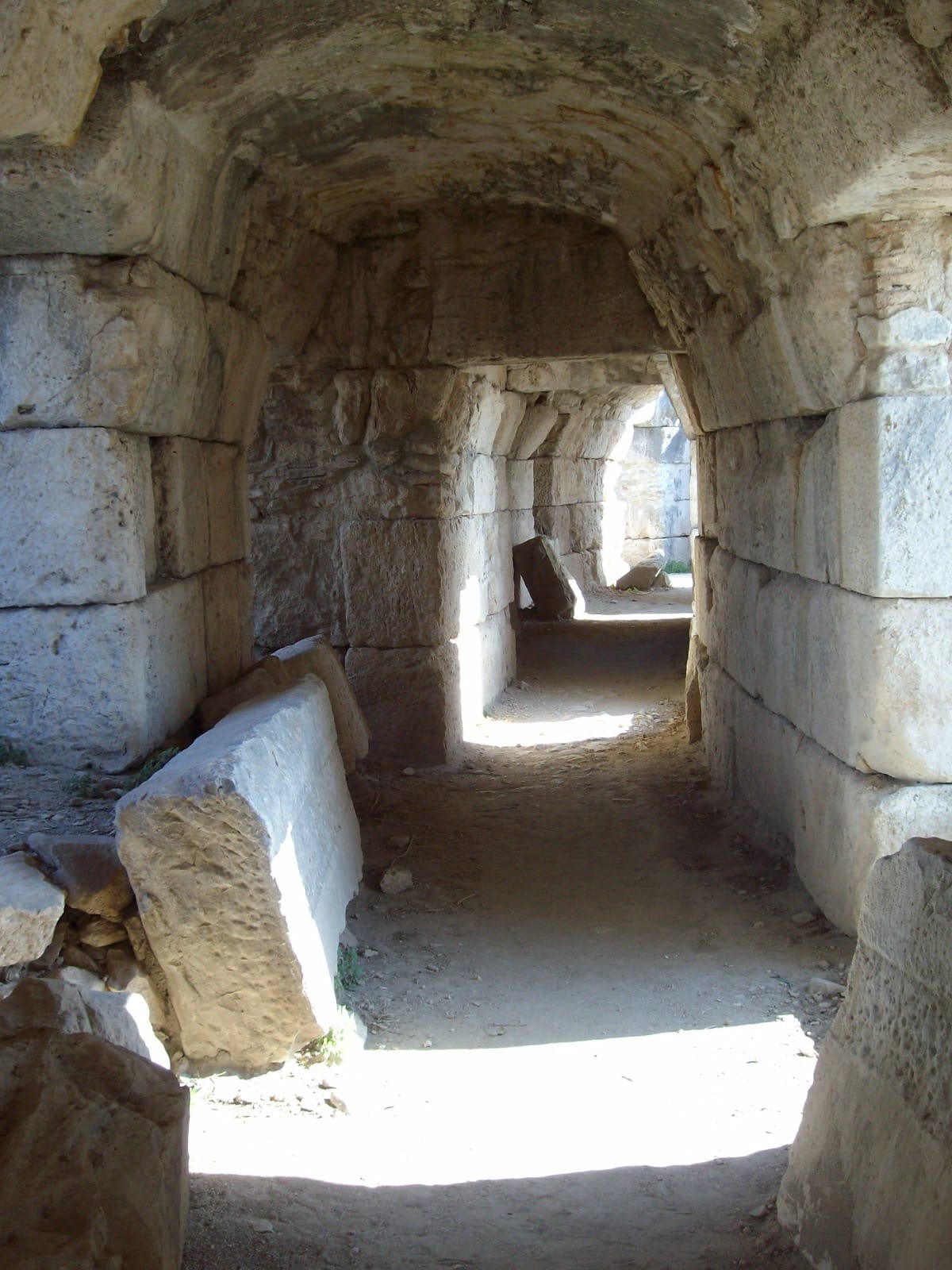
Strabo XIV – I. / 20 – On the way to Ephesus by sea, passing through the Samos Strait, near Mount Mykale, you come to the shore of Ephesus on the right. A part of this sea coast is in the hands of the Samians. First on the shore is the Panionion, which is 3 stadions inland from the sea.
This is the place where the so-called Pan-Ionian union is located, where every year the traditional festival of the Ionians is held, sacrifices are offered in honor of the Poseidon of Helikonia, and the Prienes serve as priests at these ceremonies. I mentioned these while describing the Peloponnesos. Next comes Neapolis, which used to belong to Ephesus.
Now this place belongs to the Samians and they replaced it with Marathesion because it was closer. Then comes the small town of Pygela, founded by Agamemnon and inhabited by some of his soldiers, with the temple of Artemis Munkhia.
This proper name (it is called hip – buttock in Pyge Hellenic) was given here because some of the soldiers of Agamemnon stayed here due to a disease that caused their buttocks.
Then comes the port called Panormos, where the temple of Artemis of Ephesus is located, and then the city of Ephesus. On the same coast, a little higher than the sea, is Ortygia, a magnificent grove where all kinds of trees, mostly cypresses, grow.
In the middle of Ortygia passes the Kenkhrios Stream, where Leto is said to have bathed after labor.
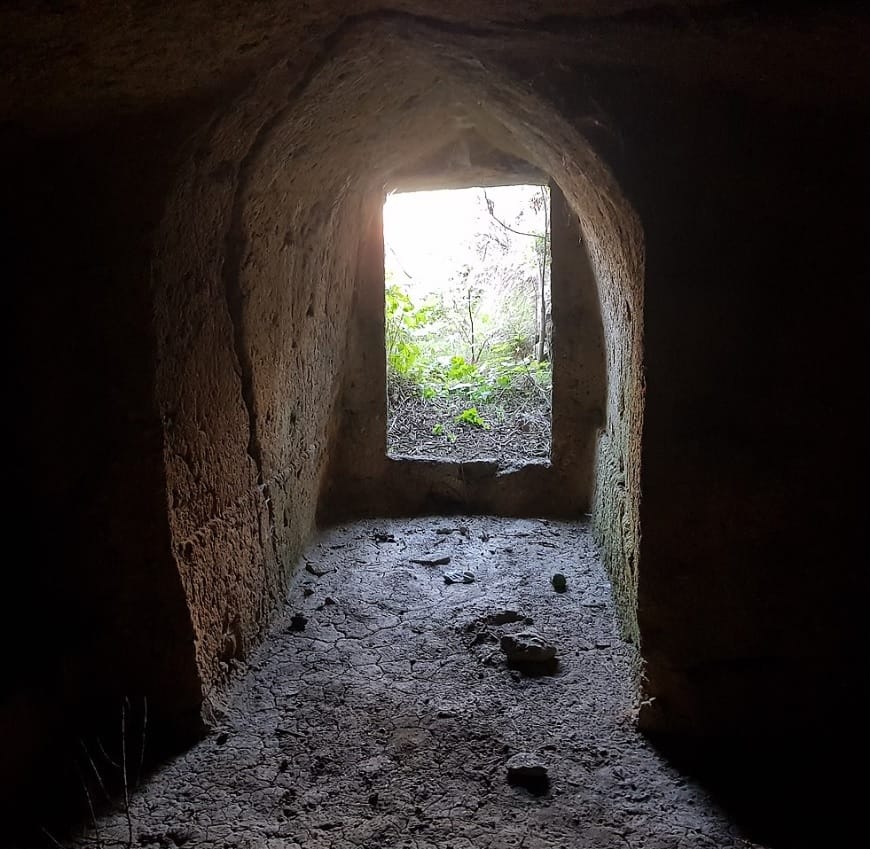
Because the legendary nativity scene took place here. The sacred place where the wet nurse Ortygia gave milk for the first time and the olive tree under which the goddess is said to have rested for the first time after she recovered from her birth pains are here. Above the grove, Mount Solmissos stretches. It is said that the Curets camped here, and they helped Leto to hide from the envious Hera, while they spied on Leto.
There are many temples here, some of which were built in ancient times and others in later times. In ancient temples there are many statues made of wood. In the temples of later times, there are works of Skopas. For example, Leto holding a scepter, and Ortygia standing, carrying each child with him.
A general feast was held here every year, and according to a certain custom, young people would compete with each other by giving magnificent feasts. At this time, a special community of Kuret priests also held feasts and performed some mystical sacrifices.
Strabo XIV – I. / 21 – The city of Ephesus was inhabited by both Carians and Lelegs. But Androklos drove them and placed those who came with him around Athenaion and Hypelaion. At the same time, this settlement included a part of the country on the slopes of Koressos Mountain. Ephesus was inhabited in this way until Croesus. Later, the people of Ephesus descended from the mountain slopes and sat around the present temple until the time of Alexander the Great.
Lysimakhos built a wall around the present city of Ephesus, but the people of Ephesus did not want to leave their homes. Therefore, Lysimachus expected a heavy rain and took advantage of it.
He had the sewers of the city of Ephesus blocked so that the city was flooded.
Thus, the people of Ephesus had to leave their places and settled in Ephesus, which Lysimakhos showed. Although Lysimachus named the city of Ephesus as Arsinoe after his wife, the name Ephesus was always used.
In Ephesus, there was a senate made up of members elected by lot, and the epicletus (advisory board members) who managed all kinds of affairs of the city cooperated with this specially appointed senate.
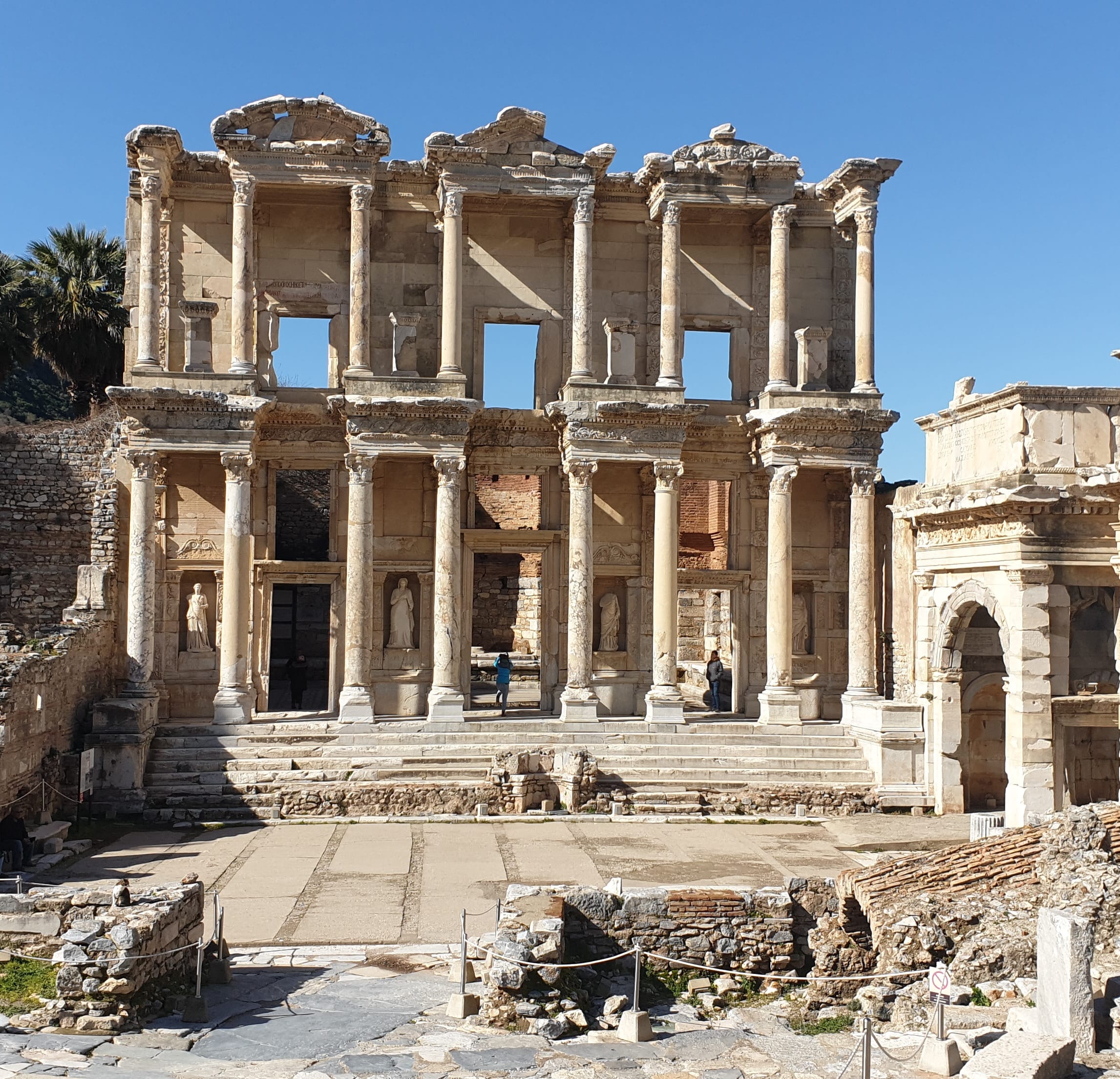
Strabo XIV – I. / 22 – Temple of Artemis – As for the temple of Artemis, the first architect of Artemis was Khersiphron, and then another architect expanded the temple of Artemis. But when the temple of Artemis was burned by someone named Herostratos, the citizens sold the women’s jewelry and personal assets to the columns of the first temple and had a better architect built it. This event was confirmed by the decrees of that time.
Artemidoros says, “Timaios of Tauromenion was unaware of these decrees and because he was a jealous and slanderous colleague (which is why he is called Epitimaios), he says that the notables of Ephesus received money from the treasury entrusted to them by the Persians for the restoration of the temple;
But at that time there was no treasure given to the protection of the Ephesians, even if it did, it should have burned down together with the temple of Artemis, and who would want to hide the relic treasure in a holy building open to the sky after the roof collapsed after the fire? ”
Artemidoros adds, “Alexander the Great promised the people of Ephesus to pay all previous and future expenses on the condition that the new Temple of Artemis is honored in the dedication inscription.
But the Ephesians did not want this, as they did not want to gain honor by desecration and robbery of the temple of Artemis, “Artemidoros praises Ephesus, who said to Alexander the Great that it would not be right for a god to make a vow to other gods.
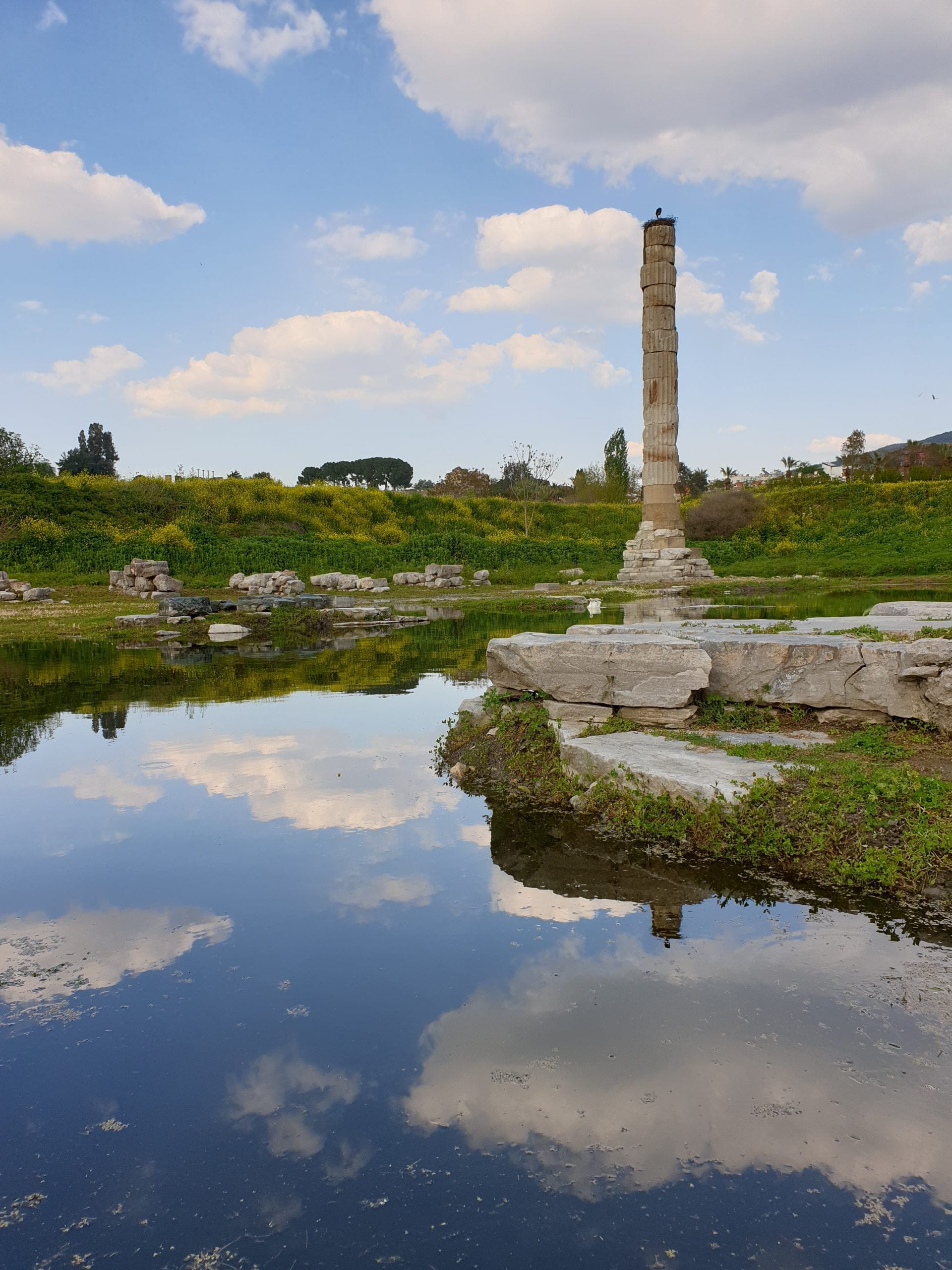
Strabo XIV – I. / 39 – The first ancient city to come after Ephesus is Magnesia. Magnesia, an Aeolian city, is called “Magnesia on the Meander” because it is near the river. However, it is closer to the Lethaios river, which mixes with Menderes and whose outlet is on the Paktyes mountain in Ephesus.
There is another Lethaios in Gortyna. Another is Trikke, said to be the birthplace of Asklepios, and another Lethaios is located in western Libya. The city of Magnesia lies on the plain near Mount Thoraks.
On this mountain, the kings of Daphitas said, “You rule by filling the treasury of Lysimachus with the purple robes decorated with lines. It is said that he was crucified for vilifying Lydia and Phrygia with his couplet, and that there was a prophecy that Daphitas should have been on the alert against Thoraks.
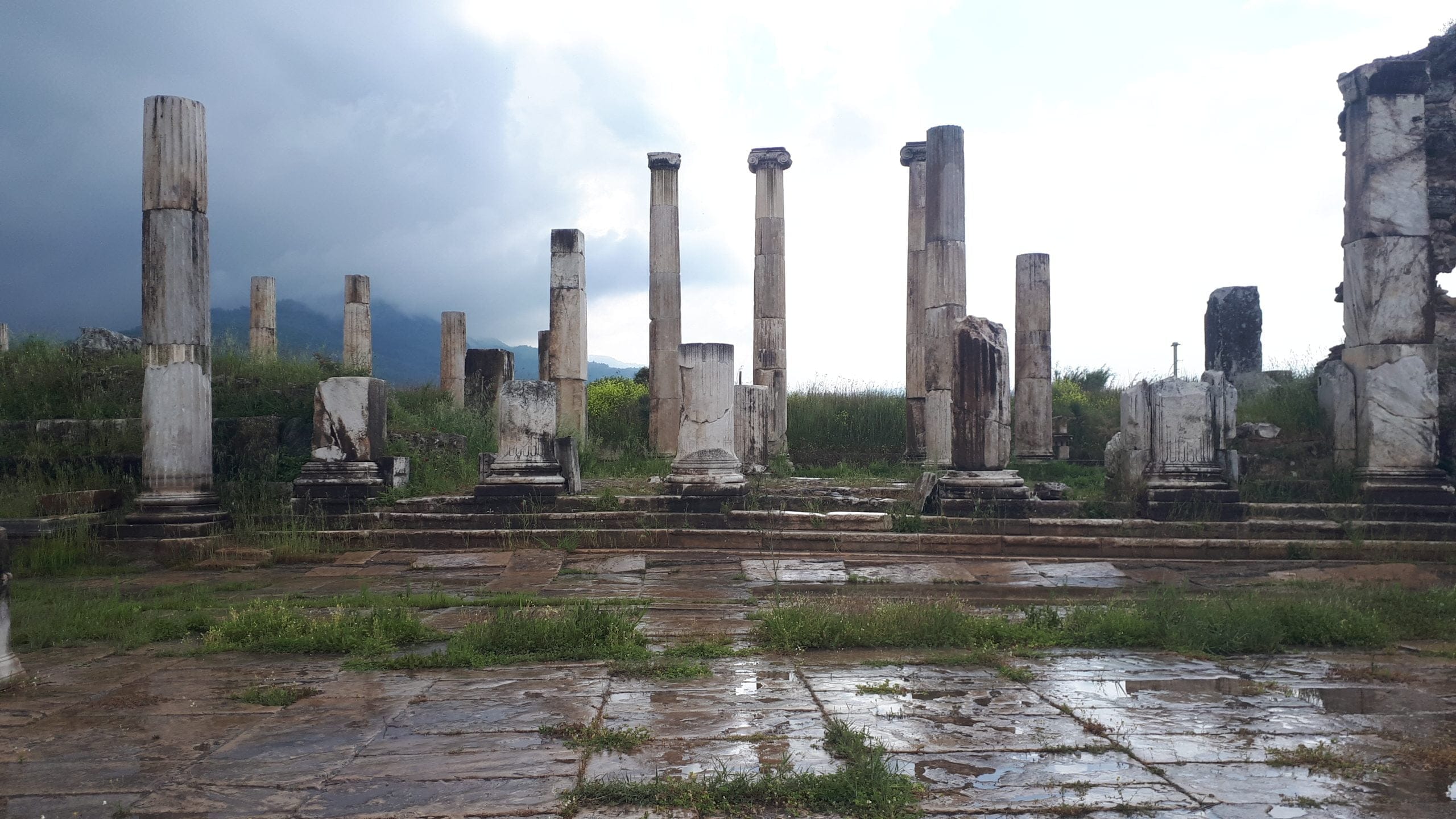
Strabo XIV – I. / 40 – It is estimated that the Magnesians came from the Delphi who lived on the Didyma hills in Thessalia. About these, Hesiod says: “Like the virgin living on the sacred hills of Didyma on the plain of Dotio, opposite Amyros, she washed her feet in the lake of Boibiados. “Here was the temple of Dindymene, the mother of the gods.
According to tradition, Themistocles’ wife and some say her daughter served there as nuns. But now there is no temple here. Because the city has moved to another place. The temple of Artemis Leukophryene is located in today’s city. The dimensions of the sanctuary of this temple and the number of votive items are less than the temple in Ephesus.
But the delicacy and harmony in its sacred construction is better than the Temple of Artemis in Ephesus. Except for the two temples in Ephesus and Didyma, it surpasses all the holy places in Asia in terms of size. It is a fact that in ancient times the Magnesians were completely exterminated by the Trers, a Cimmerian tribe. Although they were a successful tribe for a long time, the people of Miletos took over this place in later years.
Kallinos says that the Magnesians are still successful in their war against the wealthy Ephesus.
But Archilochus is aware of the disaster that befell them and expresses it like this: “He should cry out for the suffering of the Thassians, not the Magnesians. ” From this expression, it is understood that Archilokos is more recent than Callinus.
“And now the army of the mighty Cimmerians has advanced,” says Callinus, clearly pointing to the capture of Sardis and thus to an earlier Cimmerian invasion.
Strabo XIV – II. / 29 – Artemidoros says: “If you go to Ephesus from Physkos in the Peria of Rhodes, the distance to Lagina is 850 stadions and to Tralleis 160 stadions. However, after crossing the Meander river, the road to Tralleis is reached almost in the middle of the tour. These are the borders of Caria.
The total distance from Physkos to the Meander river along the Ephesus road is 1180 stadiums. Again, the same road is passed from Meander along the Ionian route, the distance from the river to Tralleis is 80 Stadion. From here, 140 to Magnesia, 120 to Ephesus, 320 to Smyrna, and less than 200 to Phokaia and the Ionian border”, so the length of the Ionian as a straight line is one more than 800 stadions according to Artemidoros.
Artemidoros also used it, as it is a general road that is constantly used by everyone who travels east from Ephesus. It is 740 stadiums from Ephesus to Karura on Magnesia, Tralleis, Nysa and Antiocheia, bordering Caria in Phrygia. From Karura (Denizli – Saraykoy) you come to Holmi, which is at the beginning of Paroreia in Phrygia, via Leodicea, Apameia, Metropolis and Khelidonia, which is 920 stadiums after Karura.
Towards the end of Paroreia, near Lykaonia, from Philomelion to Tyriaion, just over 500 stadia. Then Lykaonia, Leodicea Katakekaumene to Koropassos, 840 stadions, from Koropassos in Lykaonia to Garsaura, a town located on the border of Cappadocia.
120 is 140 stadia, from there via Sadakor to Mazaka, the metropolis of Cappadocia, through the small town of Herphai after 680 to the river Euphrates, which runs to Tomisa, a place in Sophene.
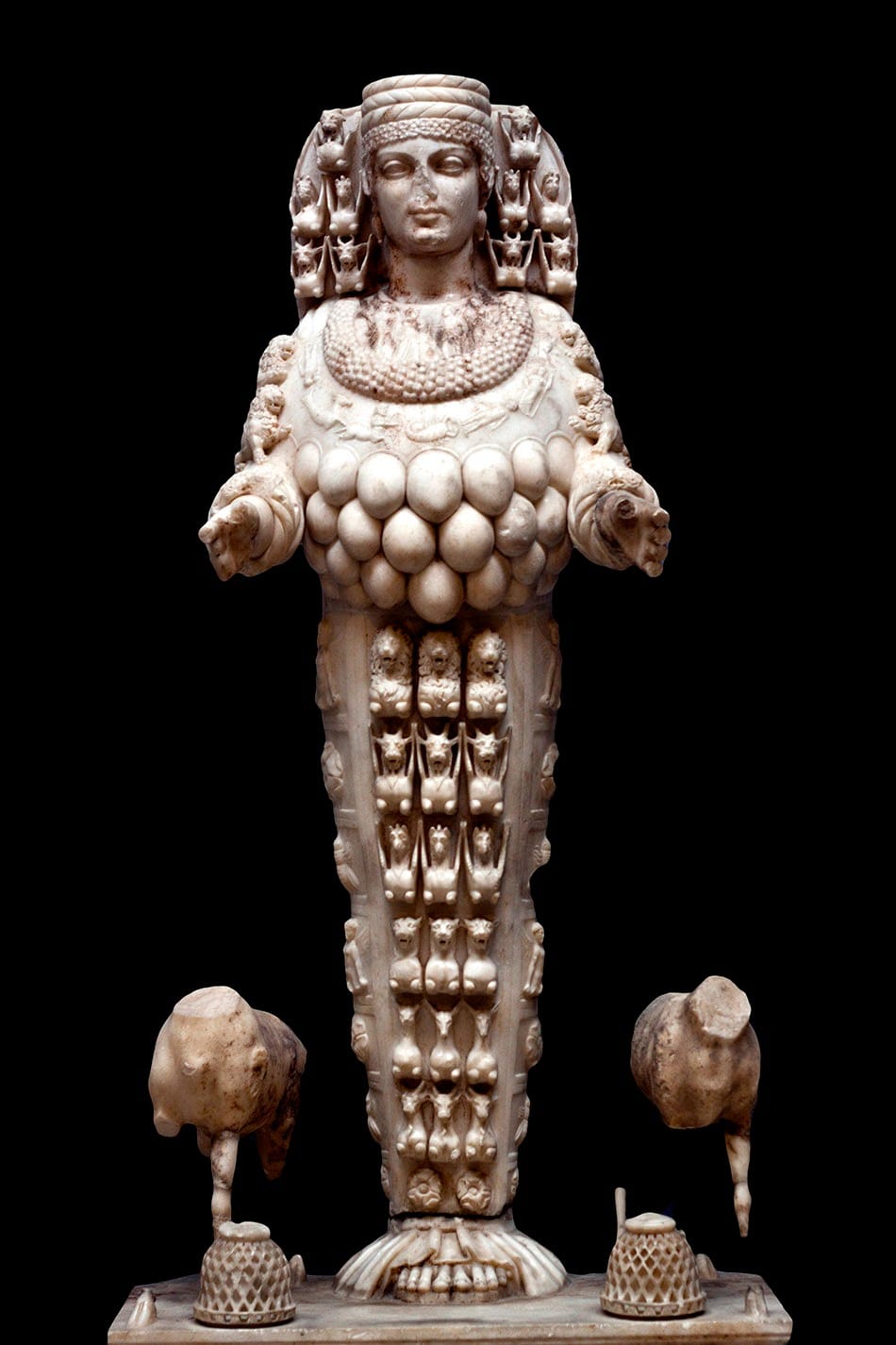
With these, places on a straight line up to India; It is the same in Artemisdoros as in Eratosthenes. But Polbios says: “We should trust Artemidoros the most about the places here.” He starts with Samosata in Zeugma and says that the distance between the Cappadocia border around Tomisa and Samosata beyond the Tauros is 450 stadia.
Strabo XII / 10 – The size of the country is as follows. Its width is about 1800 stadions from Pontos to Tauros, and its length is about 3000 stadions from Lycaonia and Phrygia to Euphrates and Armenia in the east. This is an excellent country not only in fruit, but especially in grain and cattle of all kinds. Although it is further south than Pontos, it is colder than it.
Almost no fruit trees grow here, although Bagadania is both flat and farther south than all of them (for it is located at the bottom of the Tauros).
Much of the rest of the country, and especially around Garsauira, Lykaonia and Morimene, a lot of donkey weeds. Ocher, also called Sinope, is made in Cappadocia.
While the Iberians compete with it, theirs is the best in the world.
The reason why he is called Sinopean is that the traders of Ephesus made to dispatch him from Sinope until the trade of the people of Cappadocia reached Cappadocia.
It is said by the miners of Archelaus that crystal and onyx plates were found around the land of the Galatians.
There is also a white stone resembling ivory in color in a certain place, from which small whetstone-sized pieces are obtained, from which handles for small daggers are made.
Elsewhere there were also many pieces of transparent stone (lapis specularis) which they exported.
The border between Pontos and Cappadocia is a mountainous region parallel to the Tauros, which begins at the westernmost tip of Khammanene, where there is the steeply fortified place of Dasmenda and extends to the easternmost tip of Lauiansene.
Both Khammanene and Lauiansene are governorates of Cappadocia.
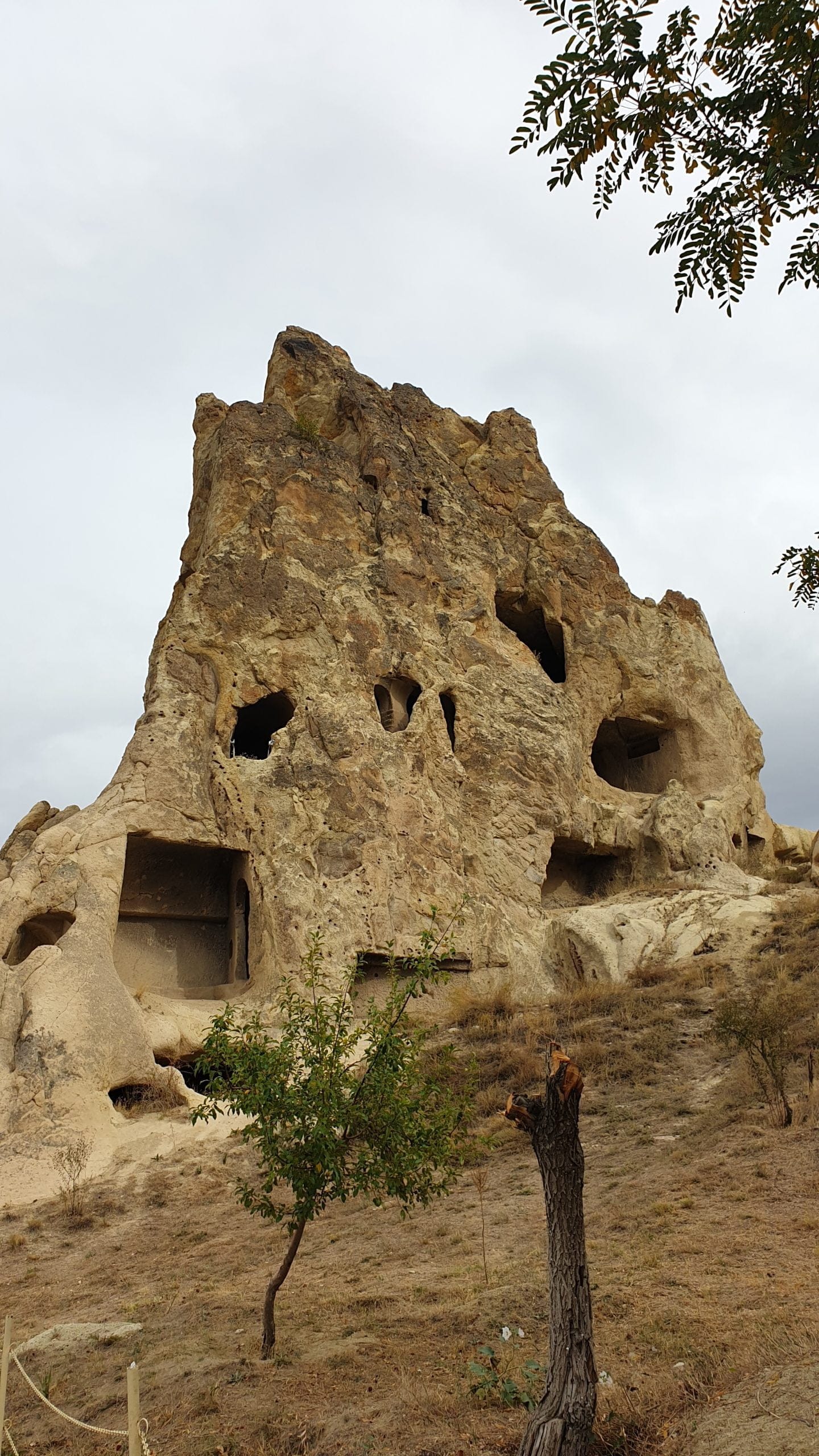
XIV – I. / 13 – An island with the same name lies in the direction of Cape Trogilion. From there, the nearest gateway to Sounion is 1600 stadions. During the journey, one first sees Samos, Ikaria and Korsia on the right and the rocks of Melantion on the left, and the rest of the road passes through the middle of the Cyclades.
The nose called Trogilion is like the spur of Mykale mountain. There is another mountain close to Mykale in the territory of the Ephesians. I mean Mount Paktyes, where this Mesogis ended.
XIV – I. / 15 – The trip around the island of Samos is 600 stations. In the earliest times, it was called Parthenia when the Carians were not settled. Then Anthemos, later Melamphyllos, later named Samos after a local hero or someone colonized the island from Ithaka and Kephallenia.
There is still a cape named Ampelos in Samos, which falls more or less across from Drepanon in Ikaria. Moreover, the mountain that covers the whole island is also called by the same name.
Good wines are not produced on the island of Samos, although the best wines are obtained in all the surrounding islands, in most of the neighboring non-island countries, such as Chios, Lesbos and Kos.
Indeed, the wines of Ephesians and Metropolises are good.
Mount Mesogis, Mount Tmolos and the land of Katakekaumene, Knidos and Smyrna and other less important places produce very fine wines that are used both for pleasure and for medicinal purposes.
Samos is not lucky in terms of wine.
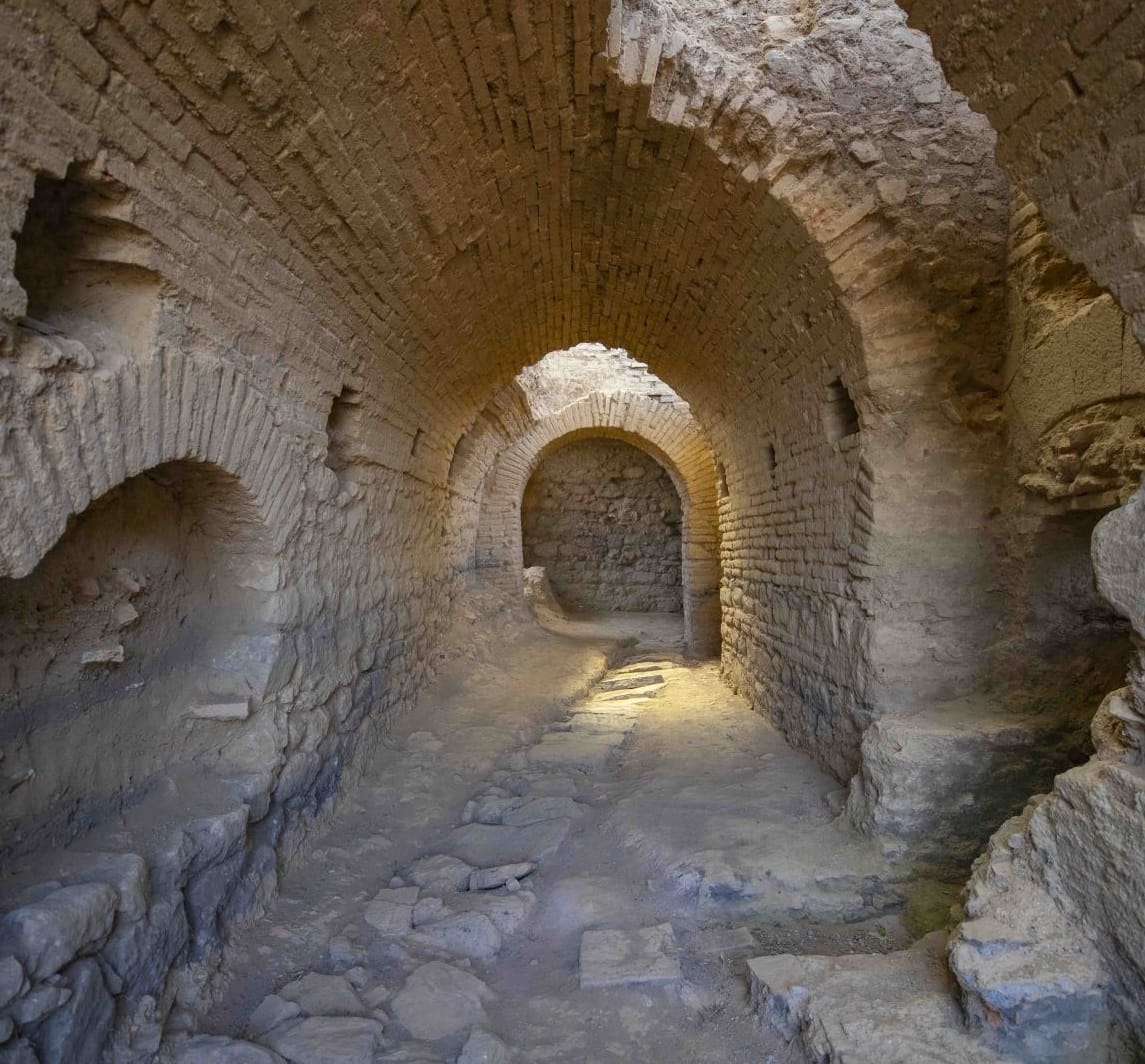
This is also the reason why tyrannies were established here and their hostility to the Athenians.
XIV – I. / 25 – Well-known people were born in the city of Ephesus. Dark Heraclitus and Hermodoros. Heraclitus says, referring to Hermodoros: “No one should be the most useful among us; Otherwise, he should hang the Ephesians, from the youngest to the oldest, who say, “Let them go to other places, to other people.”
It is thought that Hermodoros wrote some laws to the Romans. The poet Hipponaks, the painters Parrhasios and Apelles, and the orator Alexandros, who was a statesman in more recent times, wrote a history and described the state of the objects in the sky in the poems he left, and gave the geographical description of the continents, each of which is the subject of a poem, is also from Ephesus.
XIV – I. / 26 – After the Kaistros river empties into the sea, there is a lake called Selonisia that empties into the sea from the sea. After that comes another lake that mixes with Selounisa, both of which provide great income. Pergamon kings deprived the goddess of this sacred income. But even though the Romans gave this lake back to the goddess, the tax collectors put this lake back into their inventory for their own benefit.
It is later said that Artemidoros was sent to Rome with a delegation of embassies and had both lakes back for the goddess Artemis, and had also won the case against Heraclitus, who was a rebel and whose case was settled in Rome, on his return, a gold depiction of the city of Ephesus was made for Artemidoros placed in the temple. In a secluded place in the innermost part of the lake, there is a temple said to have been built by Agamemnon.
XIV – I. / 38 After Smyrna, one comes to a small city called Leukia. After the death of Attalos Philometor, Aristonicus, who was respected because he was from the royal family and was considering taking over the kingdom, rebelled here. He was exiled from Symrna as soon as he was defeated by Ephesus in a naval battle around the lands of the Cyme.
But Aristonicus went inland and soon gathered large numbers of helpless, unsupported people and even captives, whom he called heliopolitai, with the promise of independence. He unexpectedly attacked Thyatira, then captured Apollonis and then directed his military forces towards other forts.
But he could not maintain this success for a long time. With the help of the cities and the Bithynia king Nicomedes and the Cappadocian kings, they sent a large number of troops against Aristonicus.
5 Roman envoys and consul Publius Crassus sent the Roman empire against Arsiticus, who came out victorious in these wars. Aristonicus also defeated this great Roman army.
Two years later, the great Roman army and its commander, who came from Rome, lost the war with Perperna. Aristonicus was taken to Rome and died in prison in Rome.
The Roman consul Crassus was defeated after the war with Aristonicus and retreated to the vicinity of Leukai. Here, as a result of the attack of some tribes, the Roman consul Crassus was killed. Perperna died of illness in Bithynia. Then Manius Aquilius came as consul with 10 regents.
Pergamon was organized as the proto-Asian province of Rome, with its ongoing administration. After Leukia, we come to Phokaia in the gulf. Then the borders of the Ionians and Aiolis are reached.
In the interior, the road from Ephesus to Antiochia, above the Ionian coast, was occupied by the Lydians and Carians, who mixed with the Hellenes around the Meander river.
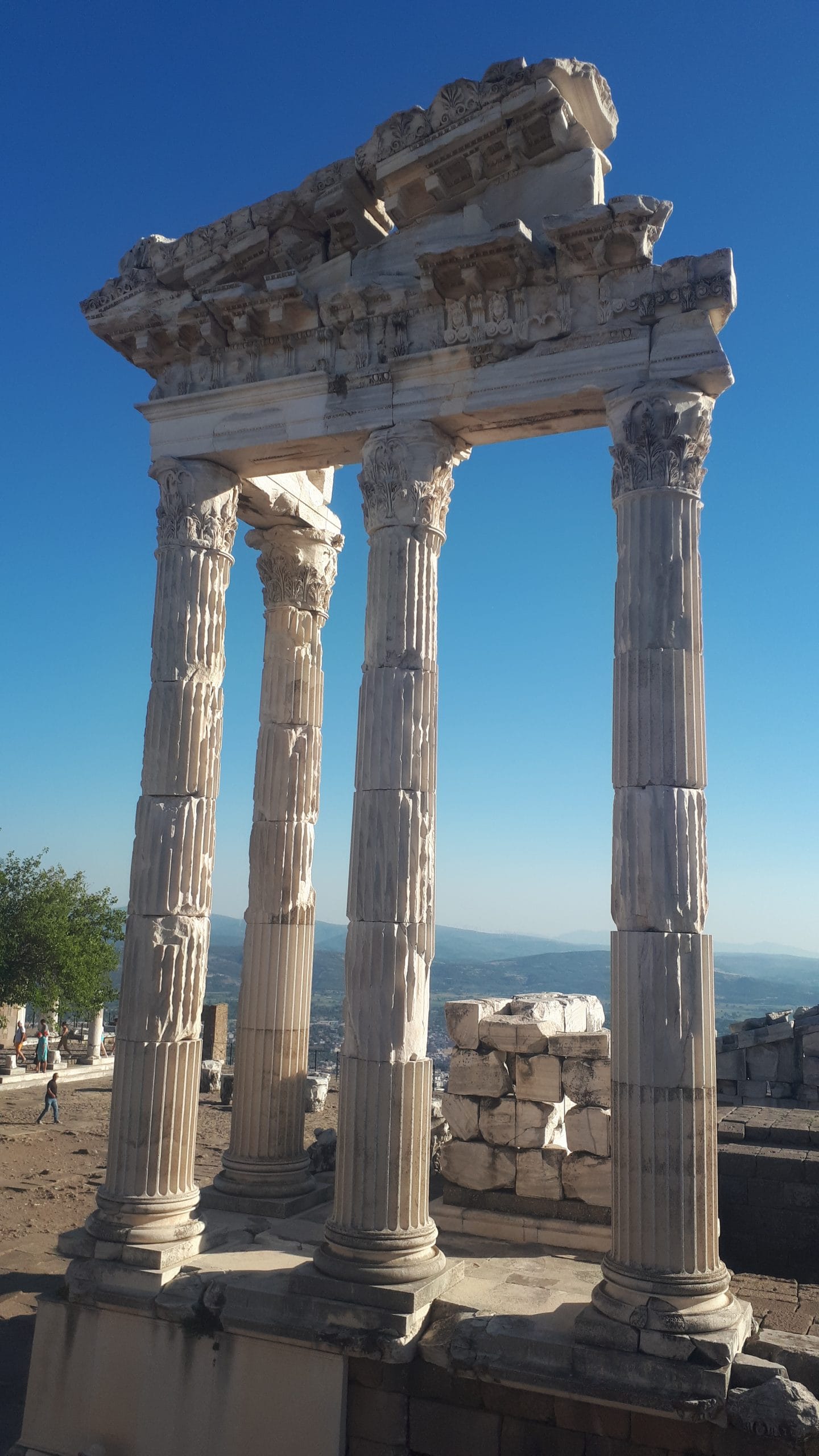
Artemission of Ephesus and Temple of Artemis
Strabo XIV – I. / 20 – On the way to Ephesus by sea, passing through the Samos Strait, near Mount Mykale, you come to the shore of Ephesus on the right. A part of this sea coast is in the hands of the Samians. First on the coast is the Panionion, which is 3 stadia inland from the sea.
This is where the union called Pan-Ionia is located, and here every year the traditional festival of the Ionians is held, sacrifices are offered in honor of the Helikonia Poseidon, and the Prienes serve as priests at these ceremonies. I mentioned these while describing the Peloponnesos.
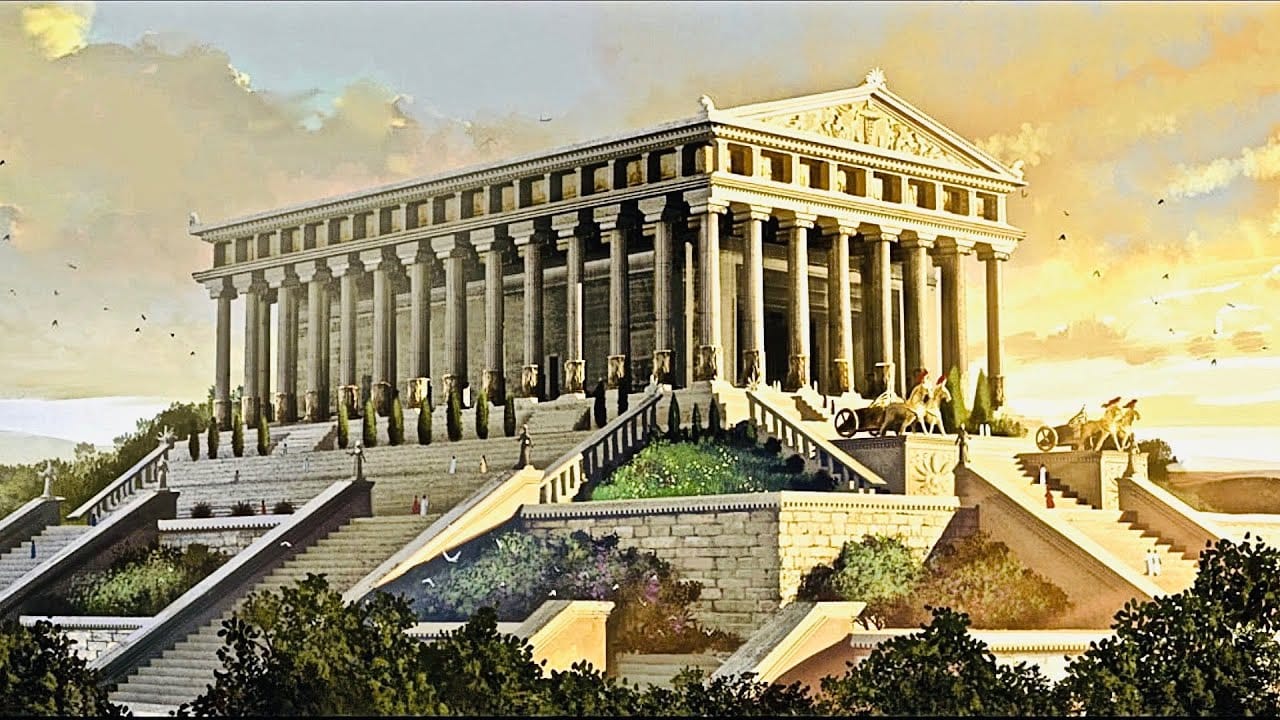
Next comes Neapolis, which used to belong to Ephesus. Now this place belongs to the Samians and they replaced it with Marathesion because it was closer. Then comes the small town of Pygela, founded by Agamemnon and inhabited by some of his soldiers, with the temple of Artemis Munkhia.
This proper name (it is called hip – buttock in Pyge Hellenic) was given here because some of the soldiers of Agamemnon stayed here due to a disease that caused their buttocks. Then comes the port called Panormos, where the temple of Artemis of Ephesus is located, and then the city of Ephesus.
On the same coast, a little higher than the sea, is Ortygia, a magnificent grove where all kinds of trees, mostly cypresses, grow. In the middle of Ortygia passes the Kenkhrios Stream, where Leto is said to have bathed after labor. Because the legendary nativity scene took place here.
The sacred place where the wet nurse Ortygia gave milk for the first time and the olive tree under which the goddess is said to have rested for the first time after she recovered from her birth pains are here. Above the grove, Mount Solmissos stretches.
It is said that the Curets camped here, and they helped Leto to hide from the envious Hera, while they spied on Leto. There are many temples here, some of which were built in ancient times and others in later times.
In ancient temples there are many statues made of wood. In the temples of later times, there are works of Skopas. For example, Leto holding a scepter, and Ortygia standing, carrying each child with him.
A general feast was held here every year, and according to a certain custom, young people would compete with each other by giving magnificent feasts. At this time, a special community of Kuret priests also held feasts and performed some mystical sacrifices.
Ephesians
Strabo XII / 10 – The size of the country is as follows. Its width is about 1800 stadions from Pontos to Tauros, and its length is about 3000 stadions from Lycaonia and Phrygia to Euphrates and Armenia in the east.
This is an excellent country not only in fruit, but especially in grain and cattle of all kinds. Although it is further south than Pontos, it is colder than it.
Almost no fruit trees grow here, although Bagadania is both flat and farther south than all of them (for it is located at the bottom of the Tauros).
Much of the rest of the country, and especially around Garsauira, Lykaonia and Morimene, a lot of donkey weeds.
Ocher, also called Sinope, is made in Cappadocia. While the Iberians compete with it, theirs is the best in the world. The reason why he is called Sinopean is that the traders of Ephesus made to dispatch him from Sinope until the trade of the people of Cappadocia reached Cappadocia.
It is said by the miners of Archelaus that crystal and onyx plates were found around the land of the Galatians. There is also a white stone resembling ivory in color in a certain place, from which small whetstone-sized pieces are obtained, from which handles for small daggers are made.
Elsewhere there were also many pieces of transparent stone (lapis specularis) which they exported.
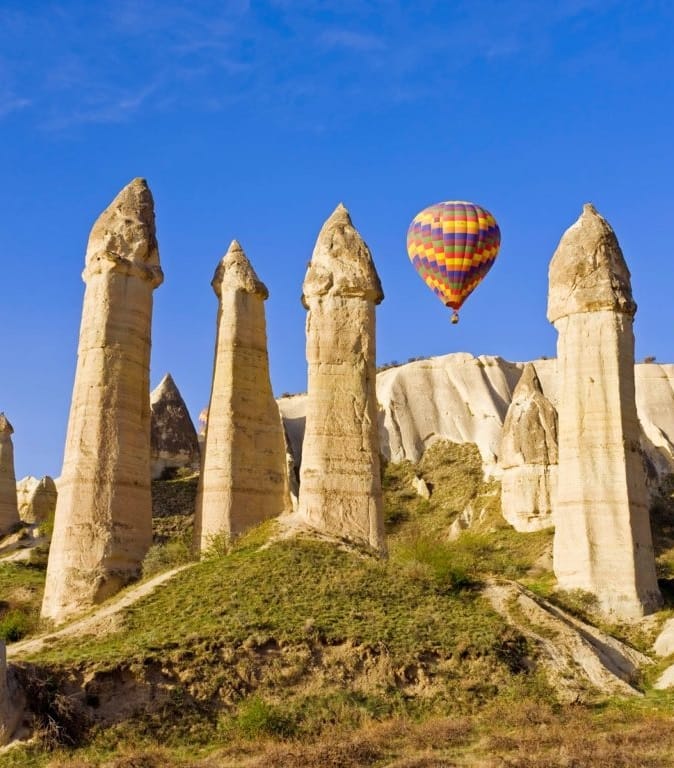
The border between Pontos and Cappadocia is a mountainous region parallel to the Tauros, which begins at the westernmost tip of Khammanene, where there is the steeply fortified place of Dasmenda and extends to the easternmost tip of Lauiansene. Both Khammanene and Lauiansene are governorates of Cappadocia.
Strabo XIII / 2 – In order to deduce from the poet’s statement the exact boundaries of the places where the Cilicians, Pelasg and (Ketei) tribe spread, it is necessary to consider many possibilities. Of these rights, the Cilicians and Ketei were under the command of Eurypylos, and the Pelasg were in between the two.
Everything that can be said about the peoples and Cilicians under the command of Eurypylos has been said so far, and it is known that the Kaikos river forms the borders of the country in general.
As for the Pelasgians: both from the words of Homer and from history in general, it is more plausible to show them after these peoples. Because Homer says: “There are Hippothoos and Pylaios. He was the son of Lethos, the son of Teutamos, both descended from Pelasg. (Iliad epic)”
With these words, he indicates that the Pelasg are outnumbered, because he says “tribes”, not tribes, and clearly states Larisa as the settlement. There are many Larisas in our time. But we must interpret it as Homer states in the Iliad, and it would be appropriate to consider the one near Cyme as the most appropriate.
Because of the three Larissa, the one near Hamaksitus is very close to Ilion. It is two hundred stadiums away. Therefore, it cannot be said with certainty where Hippothoos fought Patrochus, because the poet speaks of Laris as “far away”. It is more likely that this is Larisa near Cyme. Because the distance between these two places is 1000 stadions.
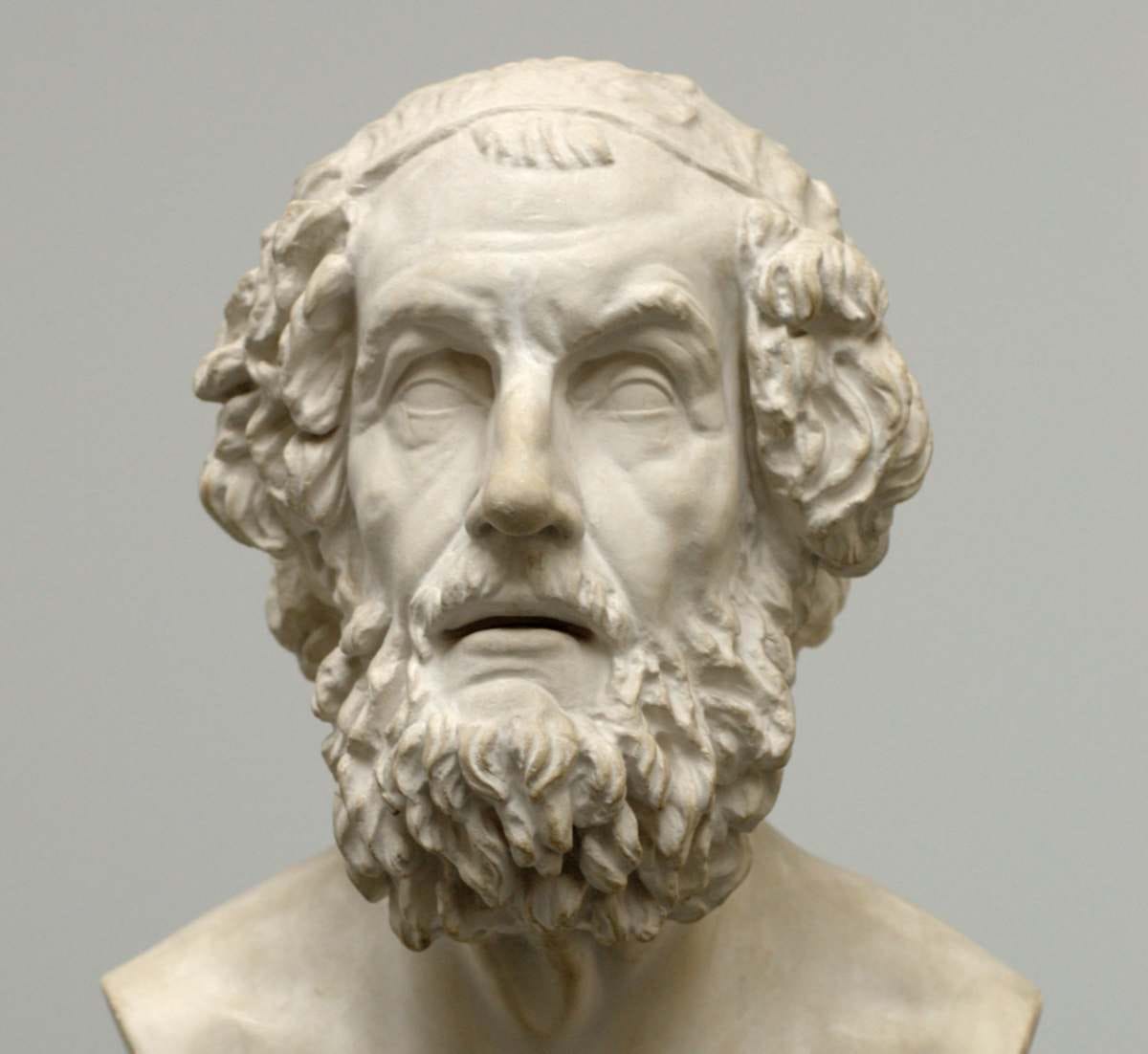
Third Larisa is a village located on the plain of Ephesus on the plain of Kaistros. It is said that this place was a city recently and that there was a temple belonging to Larisa Apollo. Larisa is closer to Mount Tmolos than Ephesus. Laris is 108 stadions away from Ephesus, and they may have settled below the Maionians.
But the Ephesians, who got stronger over time, have now captured the lands of the Maionians, which we call the Lydians. Therefore, this cannot be the Larisa of the Pelags. It’s more likely to be near Cyme.
In fact, there is no strong evidence that Larisa in the plain of Kaistros existed at that time. Likewise, there is no Ephesus. But Ailoia, which emerged just after the Trojan wars, bears witness to the presence of Larisa near the historical Cyme.
Strabo XIV – I. / 4 – These are the 12 ion cities. But later on, Smyrna was persuaded by Ephesus to join the Ionian union and joined. In the past, when Ephesus was also called Smyrna, Ephesus was neighbors with Smyrna. Kallinos calls it Smyrna instead of Ephesus.
As in his prayer to Zeus: “Have mercy on the Smyrnaeans! Don’t forget that the Smyrnas always make an offering by burning beautiful ox thighs for you!” Smyrna was an amazon that took Ephesus, and since then both the city and its inhabitants have been named after him, just as some Ephesians were named Sisyrbites after Sisyrbe.
“He lived in Smyrna, at the back of the city, between Tracheia and Lepra Akte,” Hipponax writes. As can be understood from its clear definition in the form, a region of Ephesus was named Smyrna. Lepra Akte is the name given to the Prion hill, which lies in the upper part of the present city and contains some of the city’s borders on it. The back of the Prion hill belongs to the lands of the Opistholeprians, and the lands along the hills around Koressos are called “Tracheia”.
The city used to be around Athenion. This place is now outside the city, next to Hypelaios, from which it takes its name.
Thus, Smyrna was behind the present city, between Tracheia and Lepra Akte, next to today’s gymnasion. The people of Smyrna, who wanted to leave Ephesus, came to the place where Smyrna was now established. This was the land of the Leleges.
They drove the Leleges from their land and founded ancient Smyrna, which is about 120 stadia away from today’s Smyrna. But the Smyrnaeans, who were later expelled by the Aeolians, took refuge in Colophon and then returned to their country with the Colophonians and took it back.
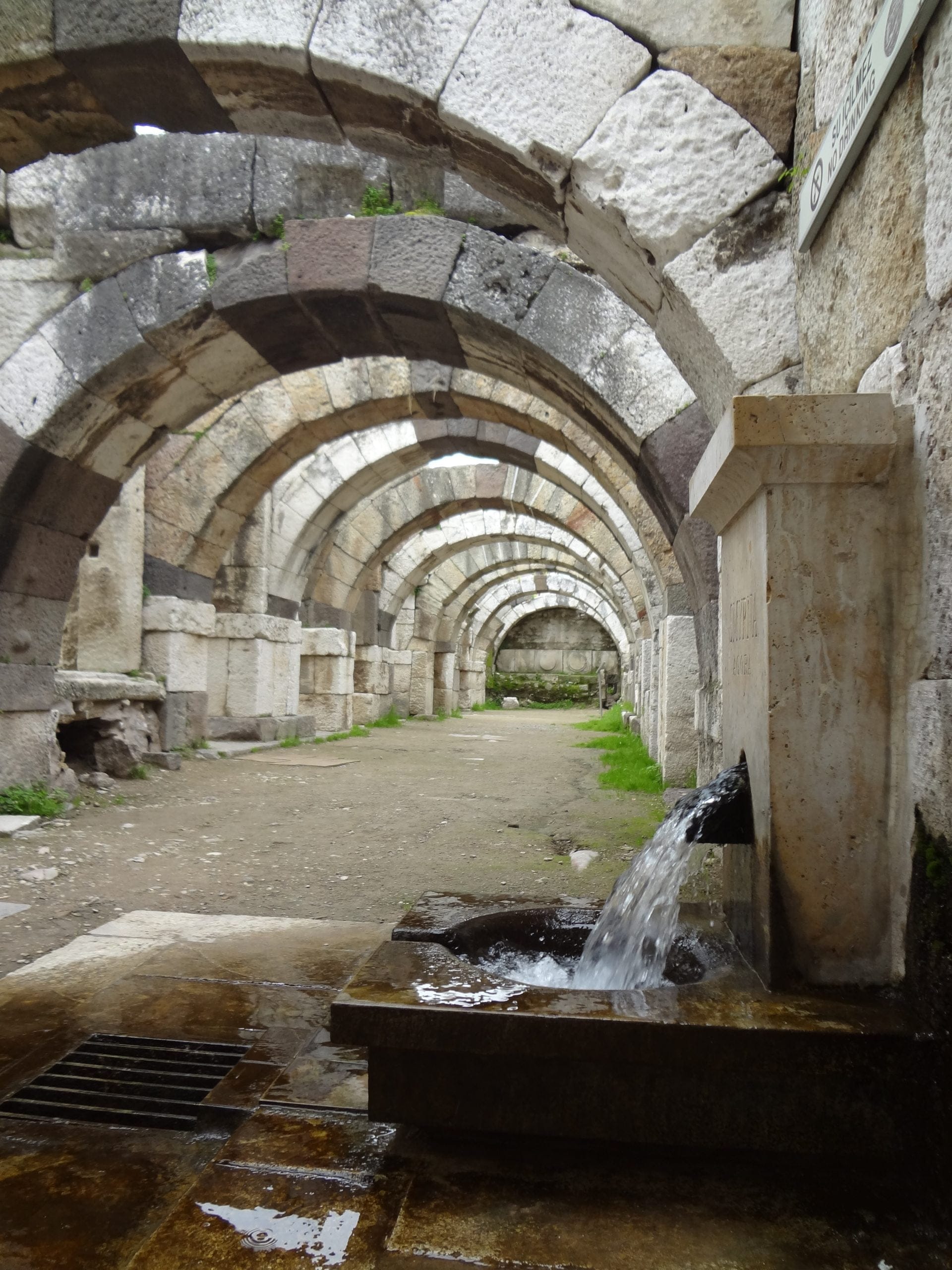
Reminding that Smyrna has always been a subject of contention, Mimnermos says in his Nanno: “After leaving Pylos, the steep city of Neleus, he came by ship to beautiful Asia, and with our victory, we took up the venture with an established and devastating audacity to our beloved Colophon. From here we crossed the Asteeis River and, by the will of the gods, captured Smyrna of the Aiolis.”
Strabo XIV – I. / 5 – Right after the Poseidon of the Miletos, there is the oracle of Apollon of Didyma in the country of Brankhids, 18 stadions inside from the coast. Except for the one in Ephesus, this place, along with other temples, was set on fire by Xerxes.
The Brankhids handed over the treasures of the temple to the Persian king Xerxes, and sided with him to escape punishment for his robbery and treachery. Although the people of Miletos built the largest temple in the world here, the roof of this temple could not be covered due to its width.
The area around the sanctuary surrounding the temple is enough to inhabit a town. There is a beautiful and sacred grove inside and outside of this area, and other sacred places in this area also contain divination hearths and cult objects.
The love legend of Apollo and Brankhos took place here. The temple is adorned with the most expensive votive items of ancient art. From there, the journey to the city by land and sea does not take long.
XIV – I. / 13 – An island with the same name lies in the direction of Cape Trogilion. From there, the nearest gateway to Sounion is 1600 stadions. During the journey, one first sees Samos, Ikaria and Korsia on the right and the rocks of Melantion on the left, and the rest of the road passes through the middle of the Cyclades.
The nose called Trogilion is like the spur of Mykale mountain. There is another mountain close to Mykale in the territory of the Ephesians. I mean Mount Paktyes, where this Mesogis ended.
XIV – I. / 15 – The trip around the island of Samos is 600 stations. In the earliest times, it was called Parthenia when the Carians were not settled. Then Anthemos, later Melamphyllos, then Samos, after a local hero or someone colonized the island from Ithaka and Kephallenia.
There is still a cape named Ampelos in Samos, which falls more or less across from Drepanon in Ikaria.
Moreover, the mountain that covers the whole island is also called by the same name. Good wines are not produced on the island of Samos, although the best wines are obtained in all the surrounding islands, in most of the neighboring non-island countries, such as Chios, Lesbos and Kos.
Indeed, the wines of Ephesians and Metropolises are good. Mount Mesogis, Mount Tmolos and the land of Katakekaumene, Knidos and Smyrna and other less important places produce very fine wines that are used both for pleasure and for medicinal purposes.
Samos is not lucky in terms of wine. But in other respects it is a happy country.
It is evident from the fact that she was a target of contention in this particular war, and that, as Menandros said, those who wanted to praise her applied the proverb “Samos even produces bird milk” to her.
This is also the reason why tyrannies were established here and their hostility to the Athenians.
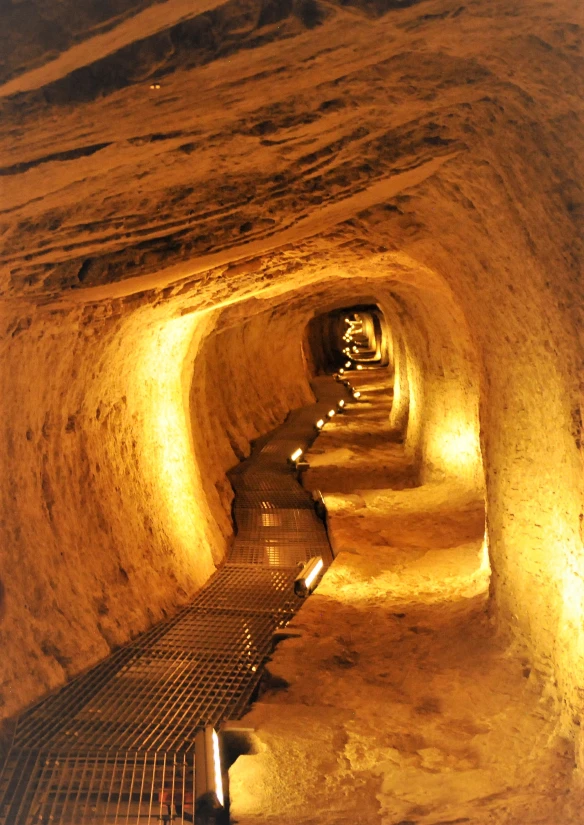
Strabo XIV – I. / 20 – On the way to Ephesus by sea, passing through the Samos Strait, near Mount Mykale, you come to the shore of Ephesus on the right. A part of this sea coast is in the hands of the Samians. First on the coast is the Panionion, which is 3 stadia inland from the sea.
This is the place where the so-called Pan-Ionian union is located, where every year the traditional festival of the Ionians is held, sacrifices are offered in honor of the Poseidon of Helikonia, and the Prienes serve as priests at these ceremonies. I mentioned these while describing the Peloponnesos.
Next comes Neapolis, which used to belong to Ephesus. Now this place belongs to the Samians and they replaced it with Marathesion because it was closer.
From here comes the small town of Pygela, founded by Agamemnon and inhabited by some of his soldiers, with the temple of Artemis Munkhia.
This proper name (it is called hip – buttock in Pyge Hellenic) was given here because some of the soldiers of Agamemnon stayed here due to a disease that caused their buttocks.
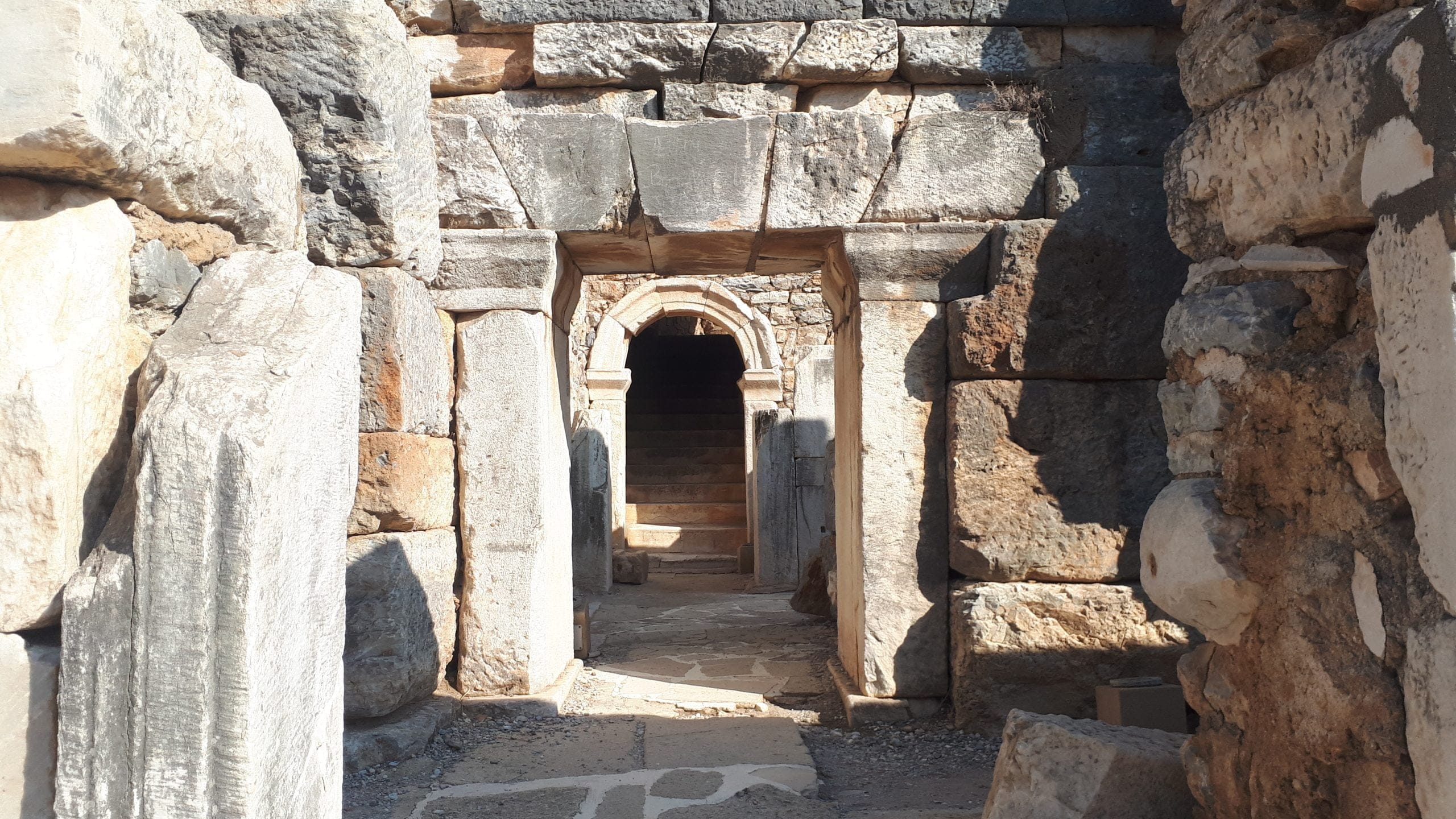
Then comes the port called Panormos, where the temple of Artemis of Ephesus is located, and then the city of Ephesus. On the same coast, a little higher than the sea, is Ortygia, a magnificent grove where all kinds of trees, mostly cypresses, grow. In the middle of Ortygia passes the Kenkhrios Stream, where Leto is said to have bathed after labor.
Because the legendary nativity scene took place here. The sacred place where the wet nurse Ortygia gave milk for the first time and the olive tree under which the goddess is said to have rested for the first time after she recovered from her birth pains are here.
Above the grove, Mount Solmissos stretches. It is said that the Curets camped here, and they helped Leto to hide from the envious Hera, while they spied on Leto. There are many temples here, some of which were built in ancient times and others in later times.
In ancient temples there are many statues made of wood. In the temples of later times, there are works of Skopas. For example, Leto holding a scepter, and Ortygia standing, carrying each child with him.
A general feast was held here every year, and according to a certain custom, young people would compete with each other by giving magnificent feasts. At this time, a special community of Kuret priests also held feasts and performed some mystical sacrifices.
Strabo XIV – I. / 21 – The city of Ephesus was inhabited by both Carians and Lelegs. But Androklos drove them and placed those who came with him around Athenaion and Hypelaion.
At the same time, this settlement included a part of the country on the slopes of Koressos Mountain.
Ephesus was inhabited in this way until Croesus. Later, the people of Ephesus descended from the mountain slopes and sat around the present temple until the time of Alexander the Great.
Lysimachos built a wall around the present city of Ephesus, but the people of Ephesus did not want to leave their homes. Therefore, Lysimachos expected a heavy rain and took advantage of it.
He had the sewers of the city of Ephesus blocked so that the city was flooded. Thus, the people of Ephesus had to leave their places and settled in Ephesus, which Lysimachos showed.
Although Lysimachos named the city of Ephesus as Arsinoe after his wife, the name Ephesus was always used.
In Ephesus, there was a senate made up of members elected by lot, and the epicletus (advisory board members) who managed all kinds of affairs of the city cooperated with this specially appointed senate.
Lysimachos III. He was the founder of the city of Ephesus.
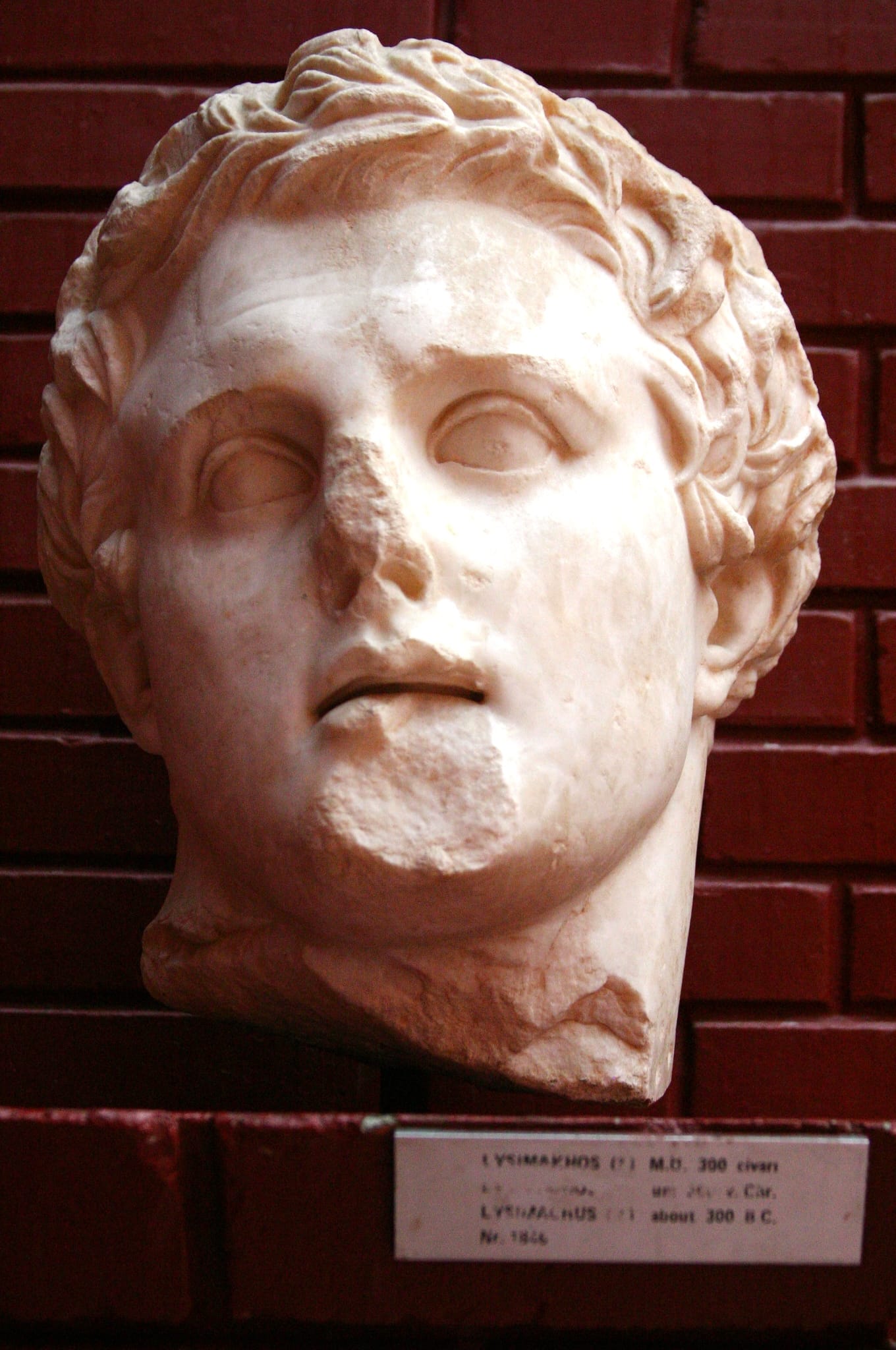
Strabo XIV – I. / 22 – Temple of Artemis – As for the temple of Artemis, the first architect of Artemis was Khersiphron, and then another architect expanded the temple of Artemis.
But when the temple of Artemis was burned by someone named Herostratos, the citizens sold the women’s jewelry and personal assets to the columns of the provincial temple and had a better architect built it.
This event was confirmed by the decrees of that time. Artemidoros says, “Timaios of Tauromenion was unaware of these decrees and neither was he a jealous and slanderous colleague (which is why he is called Epitimaios).
He says that the notables of Ephesus received money for the restoration of the temple from the treasury entrusted to them by the Persians; but at that time there was no treasure given to the protection of the Ephesians, even if it did, it should have burned down together with the temple of Artemis, and who would want to hide the relic treasure in a holy building open to the sky after the roof collapsed after the fire?
Adding Artemidoros, he says, “Alexander the Great promised the people of Ephesus to pay all the previous and future expenses, on the condition that the new Temple of Artemis is honored in the dedication inscription, but the Ephesians did not want this.
As they do not want to gain honor by desecration and robbery of the temple of Artemis, “Artemidoros praises Ephesus, who told Alexander the Great that it would not be right for a god to make a vow to other gods.“
XIV – I. / 26 – After the Kaistros river empties into the sea, there is a lake called Selonisia that empties into the sea from the sea. After that comes another lake that mixes with Selounisa, both of which provide great income.
Pergamon kings deprived the goddess of this sacred income. But even though the Romans gave this lake back to the goddess, the tax collectors put this lake back into their inventory for their own benefit.
Afterwards, it is said that Artemidoros was sent to Rome with a delegation of ambassadors and reclaimed both lakes for the goddess Artemis, and also won the case against Heraclitus, who was a rebel and whose case was settled in Rome, on his return, a gold depiction of the city of Ephesus was made for Artemidoros, placed in the temple.
In a secluded place in the innermost part of the lake, there is a temple said to have been built by Agamemnon.
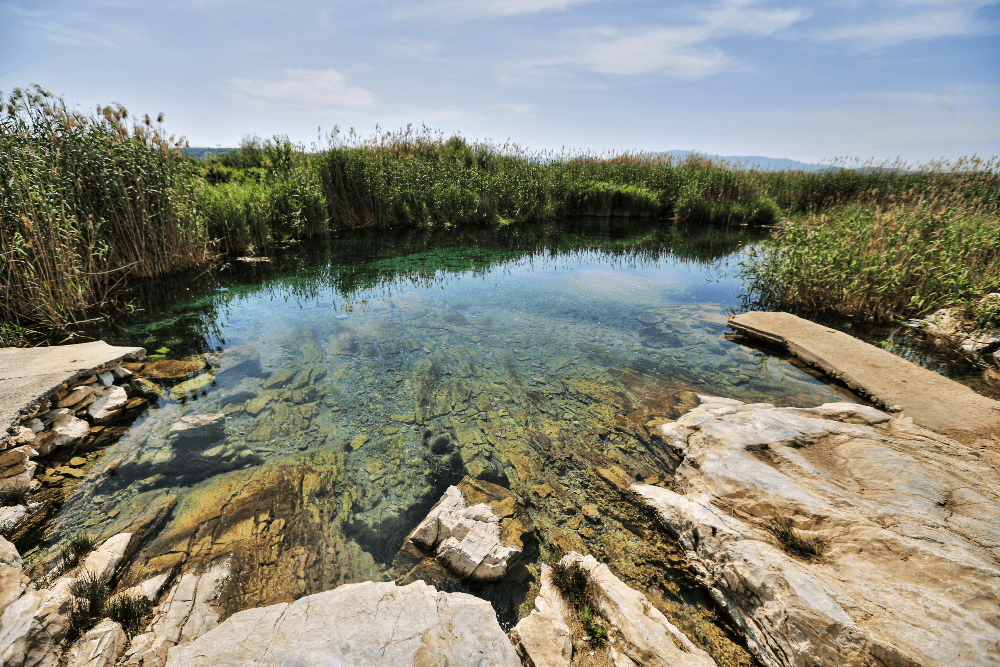
XIV – I. / 38 After Smyrna, one comes to a small city called Leukia. After the death of Attalos Philometor, Aristonicus, who was respected because he was from the royal family and was considering taking over the kingdom, rebelled here.
He was exiled from Symrna as soon as he was defeated by Ephesus in a naval battle near the lands of the Cymeeans.
But Aristonicus went inland and soon gathered large numbers of helpless, unsupported people and even captives, whom he called heliopolitai, with the promise of independence.
He unexpectedly attacked Thyatira, then captured Apollonis and then directed his military forces towards other forts.
But he could not maintain this success for a long time. With the help of the cities and the Bithynia king Nicomedes and the Cappadocian kings, they sent a large number of troops against Aristonicus.
5 Roman envoys and consul Publius Crassus sent the Roman empire against Arsiticus, who came out victorious in these wars.
Aristonicus also defeated this great Roman army. Two years later, the great Roman army and its commander, who came from Rome, lost the war with Perperna. Aristonicus was taken to Rome and died in prison in Rome.
The Roman consul Crassus was defeated after the war with Aristonicus and retreated to the vicinity of Leukai. Here, as a result of the attack of some tribes, the Roman consul Crassus was killed. Perperna died of illness in Bithynia.
Then Manius Aquilius came as consul with 10 regents. Pergamon was organized as the proto-Asian province of Rome, with its ongoing administration. After Leukia, we come to Phokaia in the gulf.
Then the borders of the Ionians and Aiolis are reached.
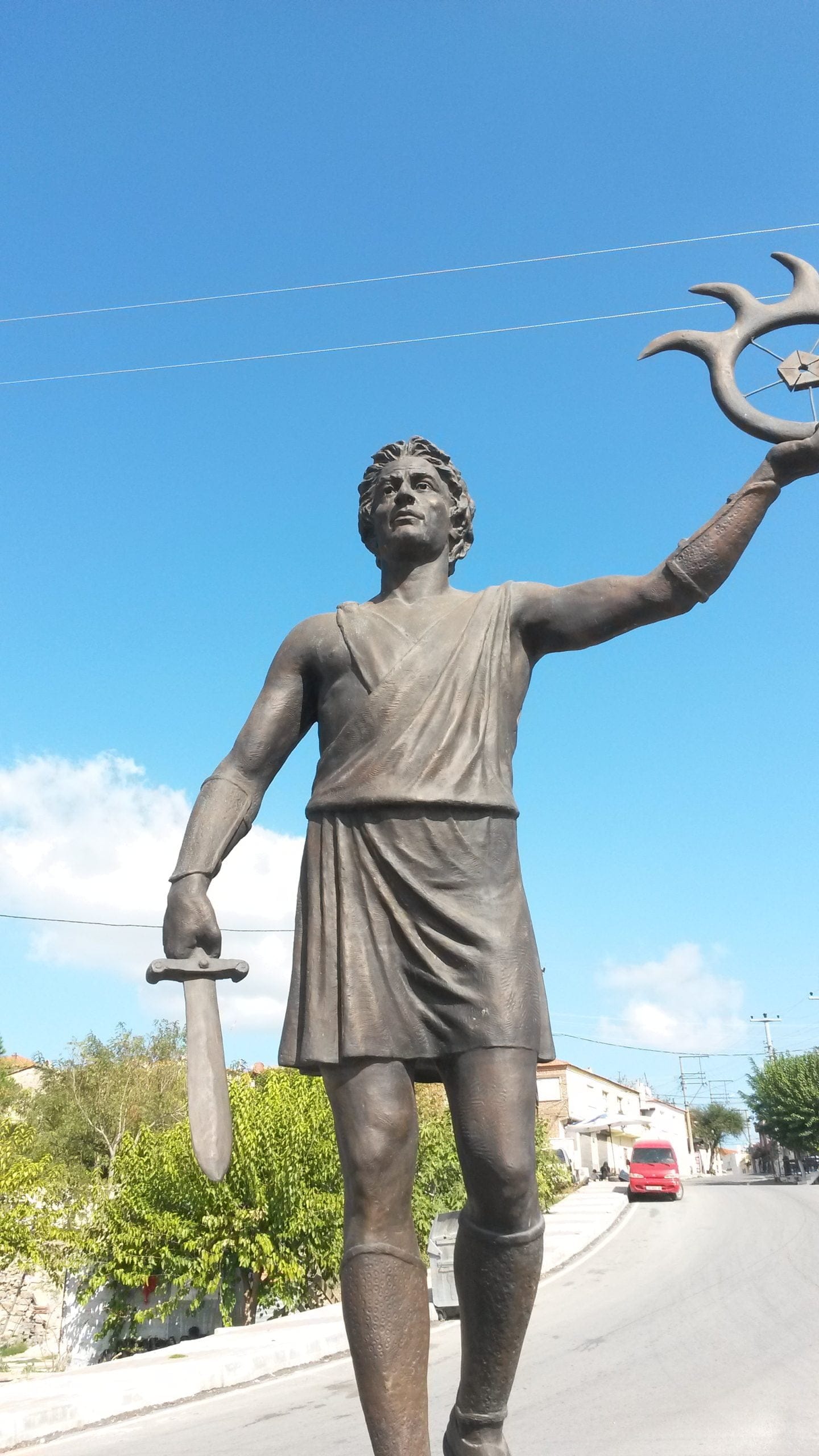
In the interior, the road from Ephesus to Antiochia, above the Ionian coast, was occupied by the Lydians and Carians, who mixed with the Hellenes around the Maindros river.
Strabo XIV – I. / 40 – It is estimated that the Magnesians came from the Delphi who lived on the Didyma hills in Thessalia.
About these, Hesiod says: “Like the virgin living on the sacred hills of Didyma on the plain of Dotio, opposite Amyros, she washed her feet in the lake of Boibiados. “Here was the temple of Dindymene, the mother of the gods.
According to tradition, Themistocles’ wife and some say her daughter served there as nuns. But now there is no temple here. Because the city has moved to another place.
The temple of Artemis Leukophryene is located in today’s city. The dimensions of the sanctuary of this temple and the number of votive items are less than the temple in Ephesus. But the delicacy and harmony in its sacred construction is better than the Temple of Artemis in Ephesus.
Except for the two temples in Ephesus and Didyma, it surpasses all the holy places in Asia in terms of size.
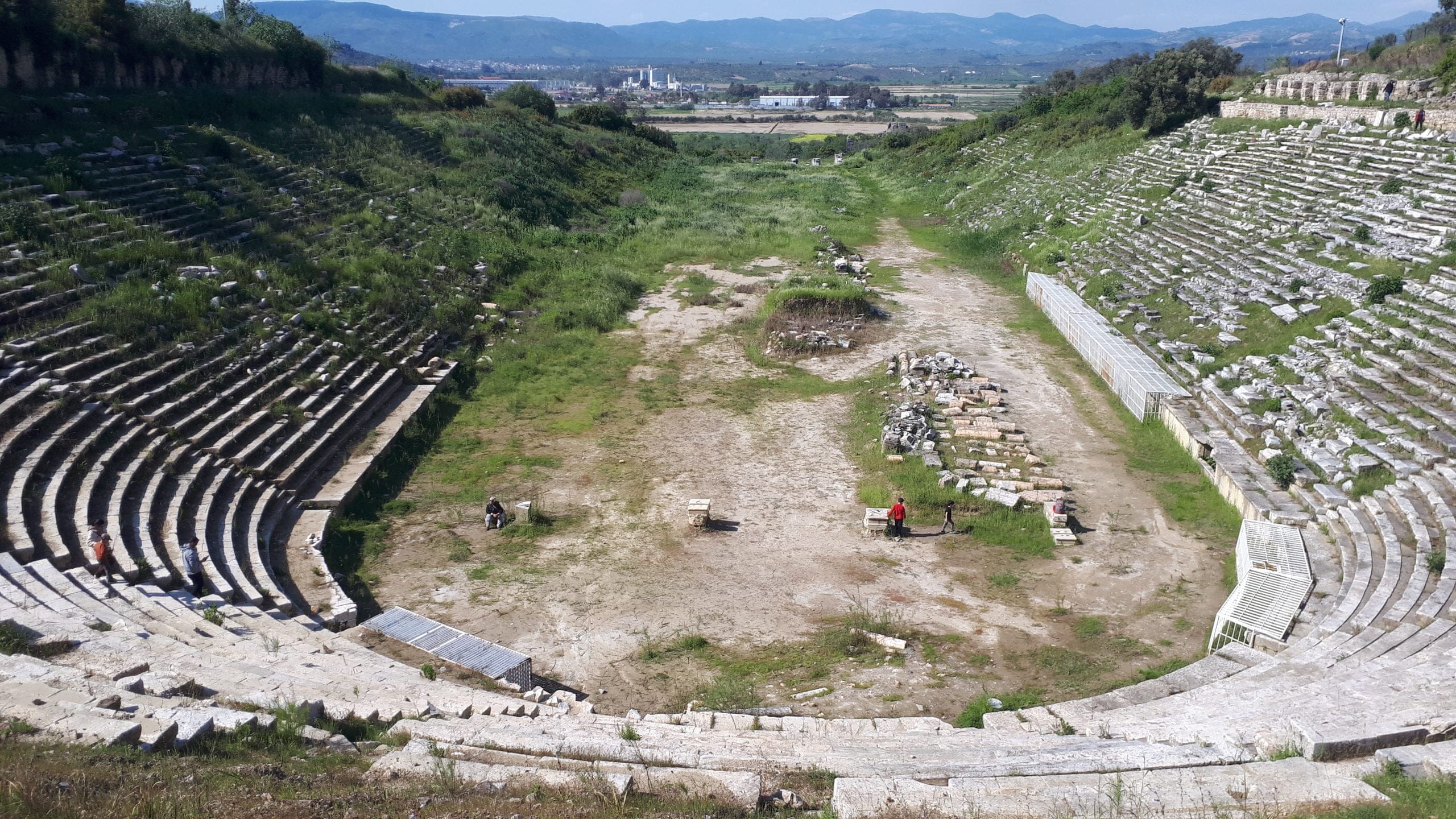
It is a fact that in ancient times the Magnesians were completely exterminated by the Trers, a Cimmerian tribe. Although they were a successful tribe for a long time, the people of Miletos took over this place in later years.
Kallinos says that the Magnesians are still successful in their war against the wealthy Ephesus. But Archilochus is aware of the disaster that befell them and expresses it like this: “He should cry out for the suffering of the Thassians, not the Magnesians. ”
It is understood that Archilokos is newer than Kallinos. “And now the army of the mighty Cimmerians has advanced,” says Kallinos, clearly pointing to the capture of Sardis and thus to an earlier Cimmerian invasion.

